Histograms of correlated \(z\) scores
Lei Sun
2017-03-06
Last updated: 2017-03-06
Code version: 1c0be20
Introduction
Efron 2010 and Schwartzman’s comment brings to the center the question “what’s the behavior of \(z\) scores under covariance?” Schwartzman pointed out in theory that “the observed histogram is more likely to be narrow than wide, and that it cannot be too wide before it becomes bimodal.” Let’s take a look if this result holds true under our simulation scheme with GTex/Liver data.
Simulation
z = read.table("../output/z_null_liver_777.txt")sample_z = sample(dim(z)[1], 20)
x = seq(- 10, 10, 0.01)
y = dnorm(x)
for (i in sample_z) {
hist(as.numeric(z[i, ]), xlab = "z scores", freq = FALSE, ylim = c(0, 0.45), nclass = 50, main = "10000 z scores, 50 bins")
lines(x, y, col = "red")
hist(as.numeric(z[i, ]), xlab = "z scores", freq = FALSE, ylim = c(0, 0.45), nclass = 100, main = "10000 z scores, 100 bins")
lines(x, y, col = "red")
}



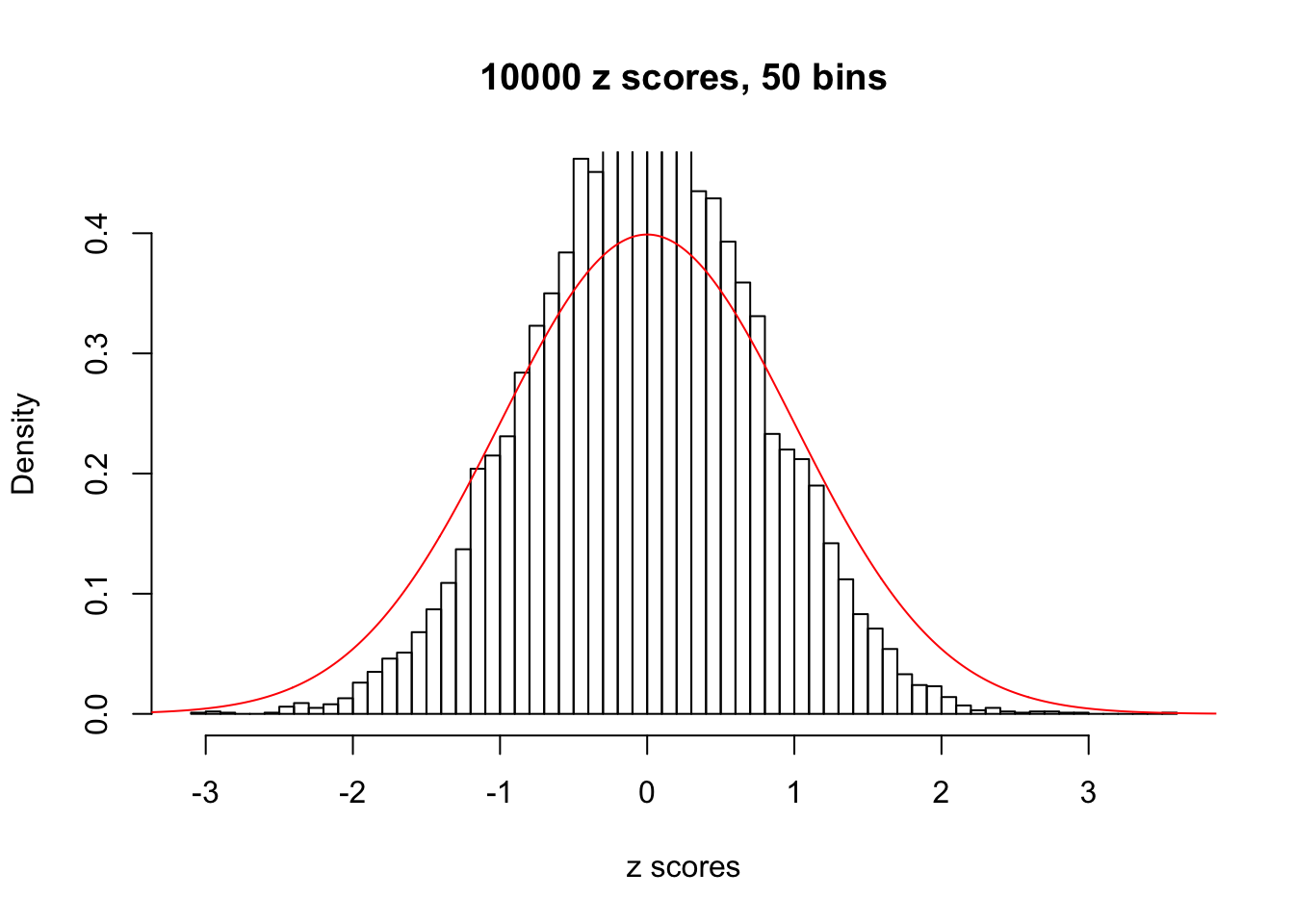
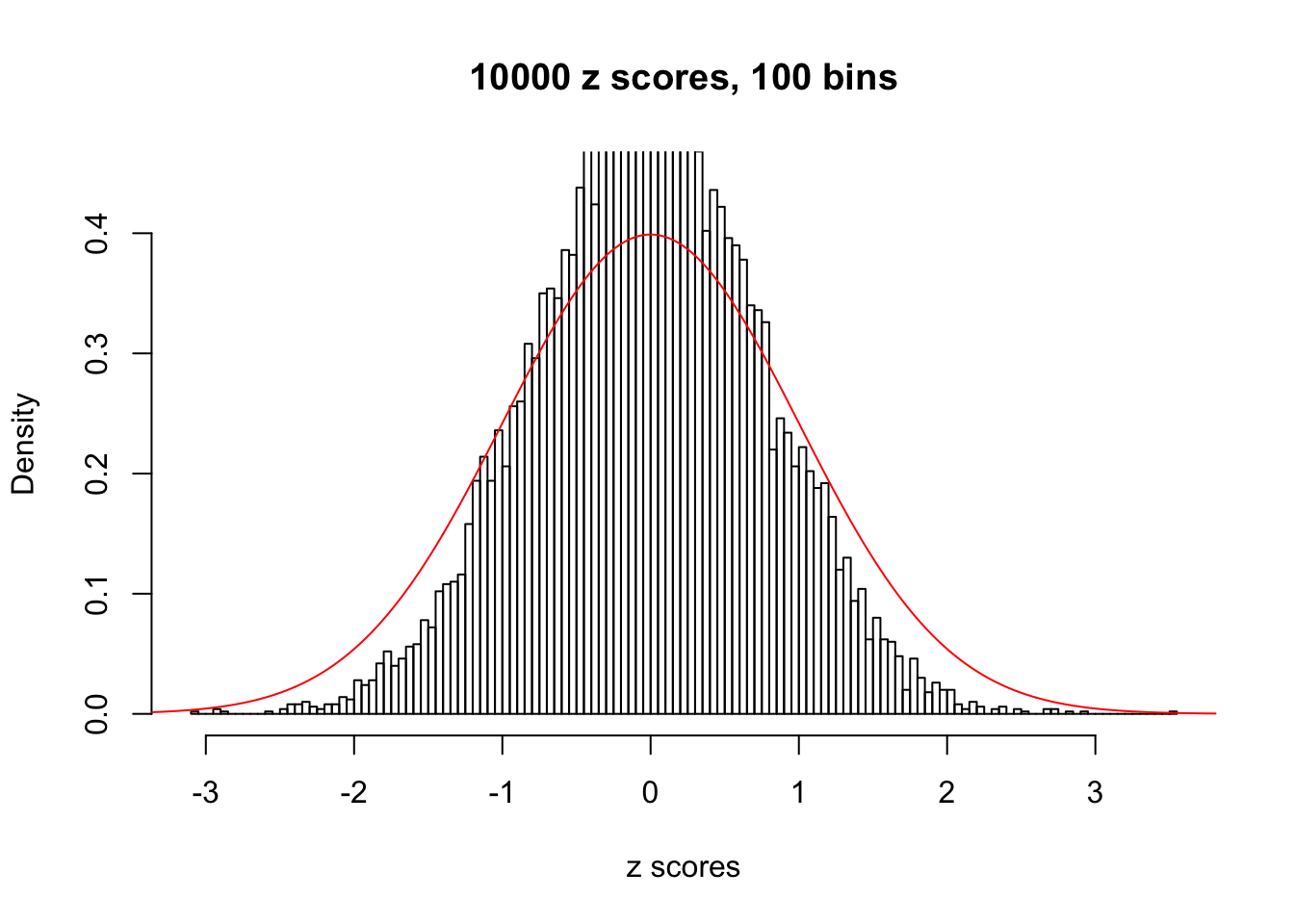
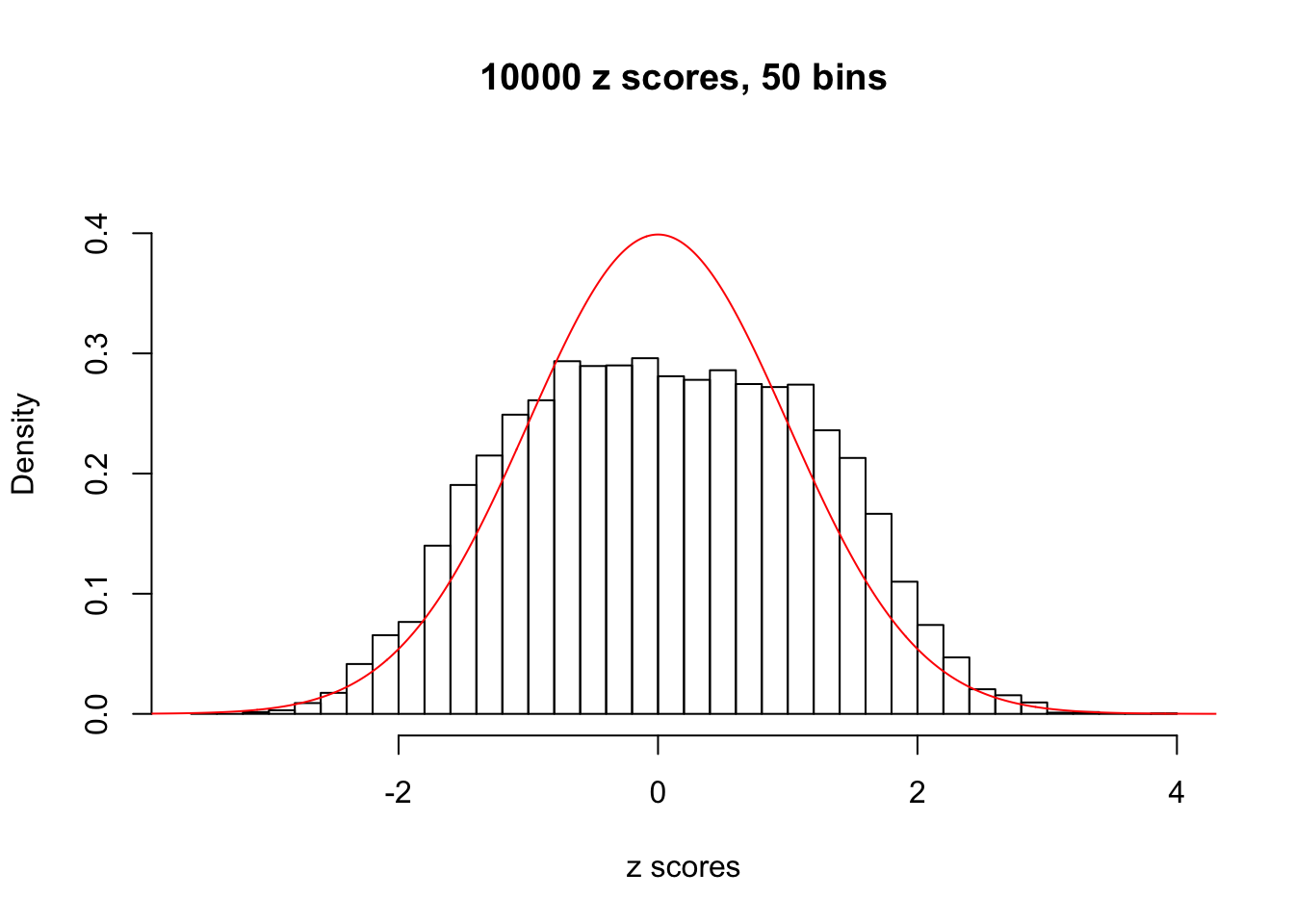

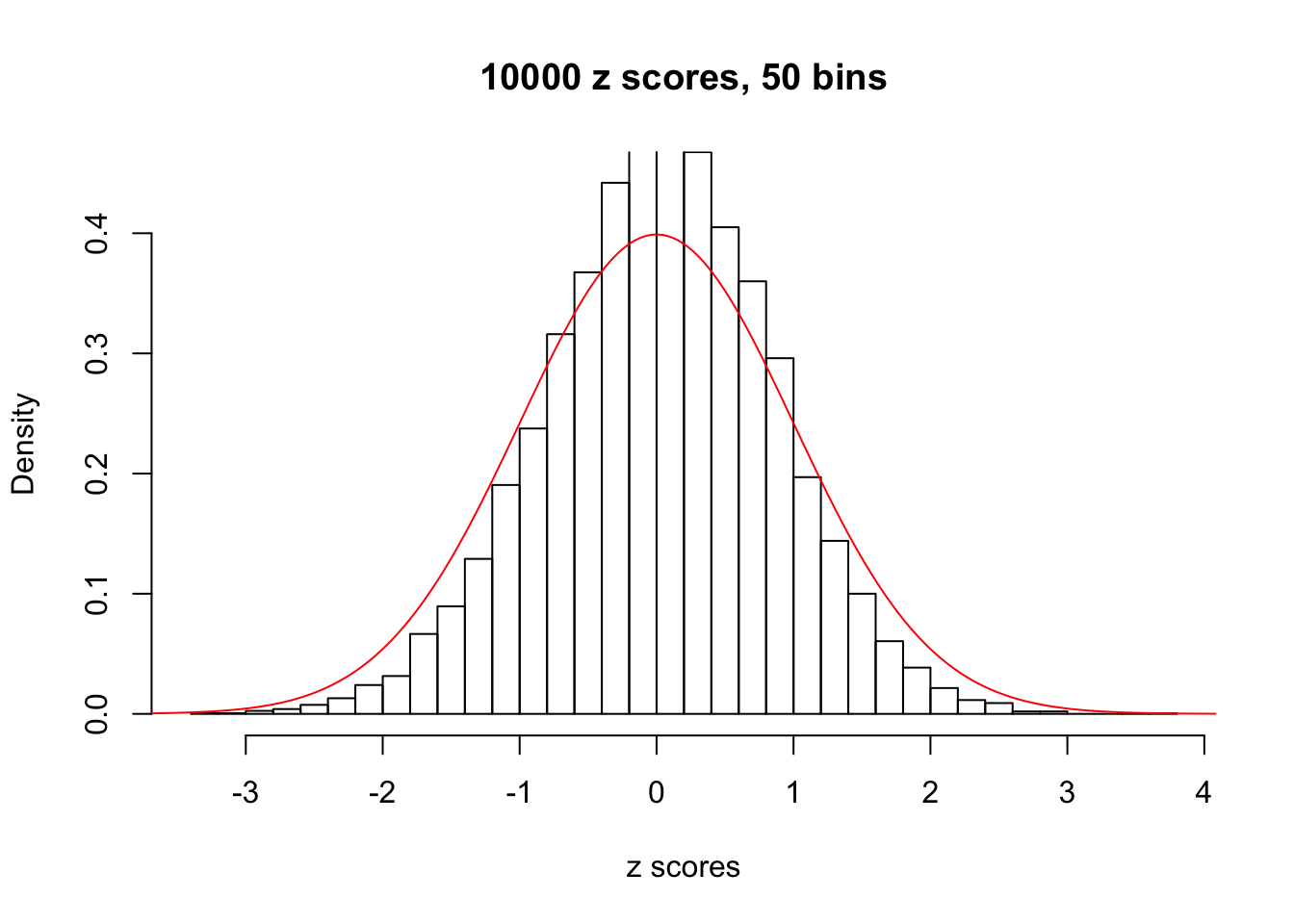

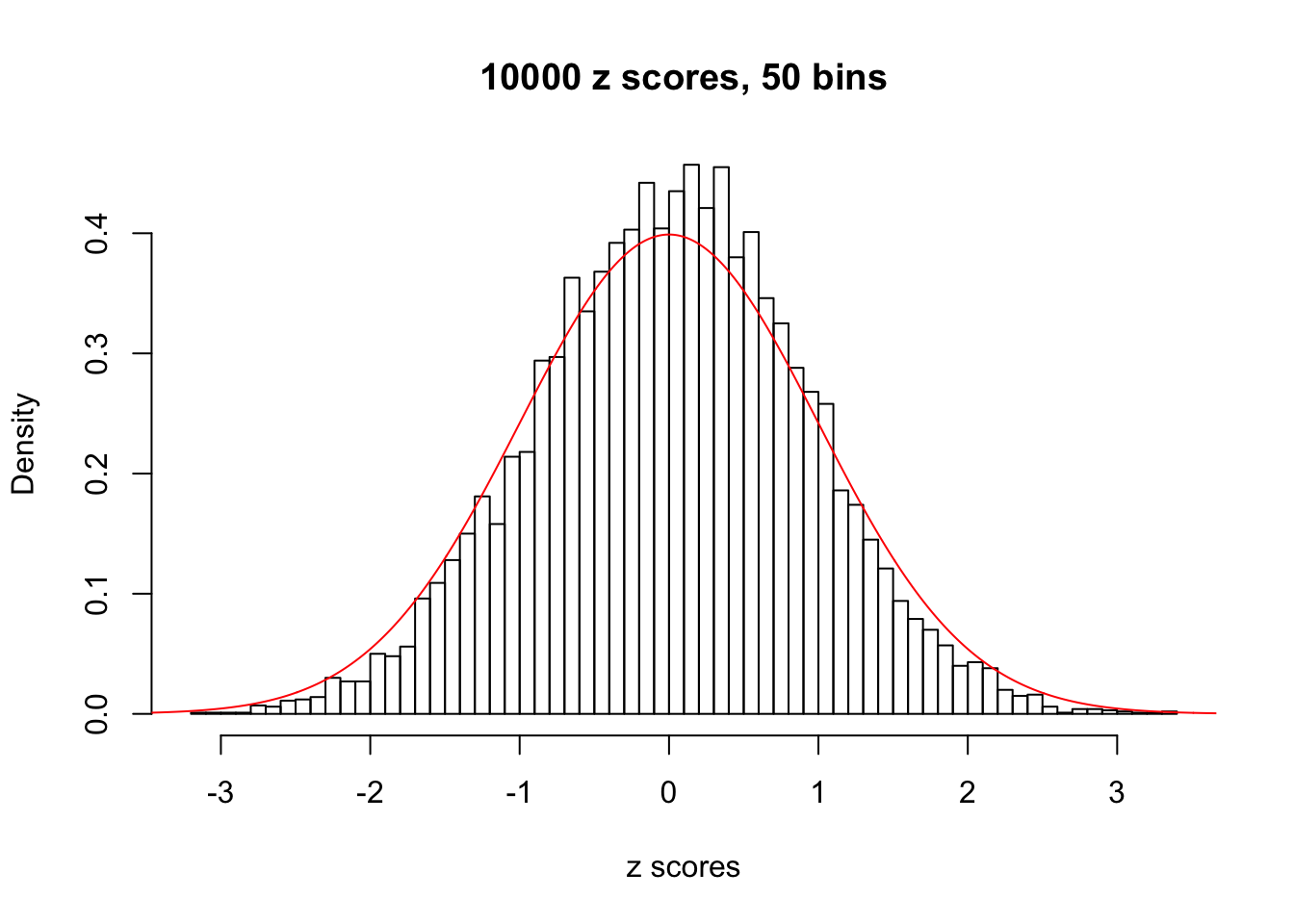
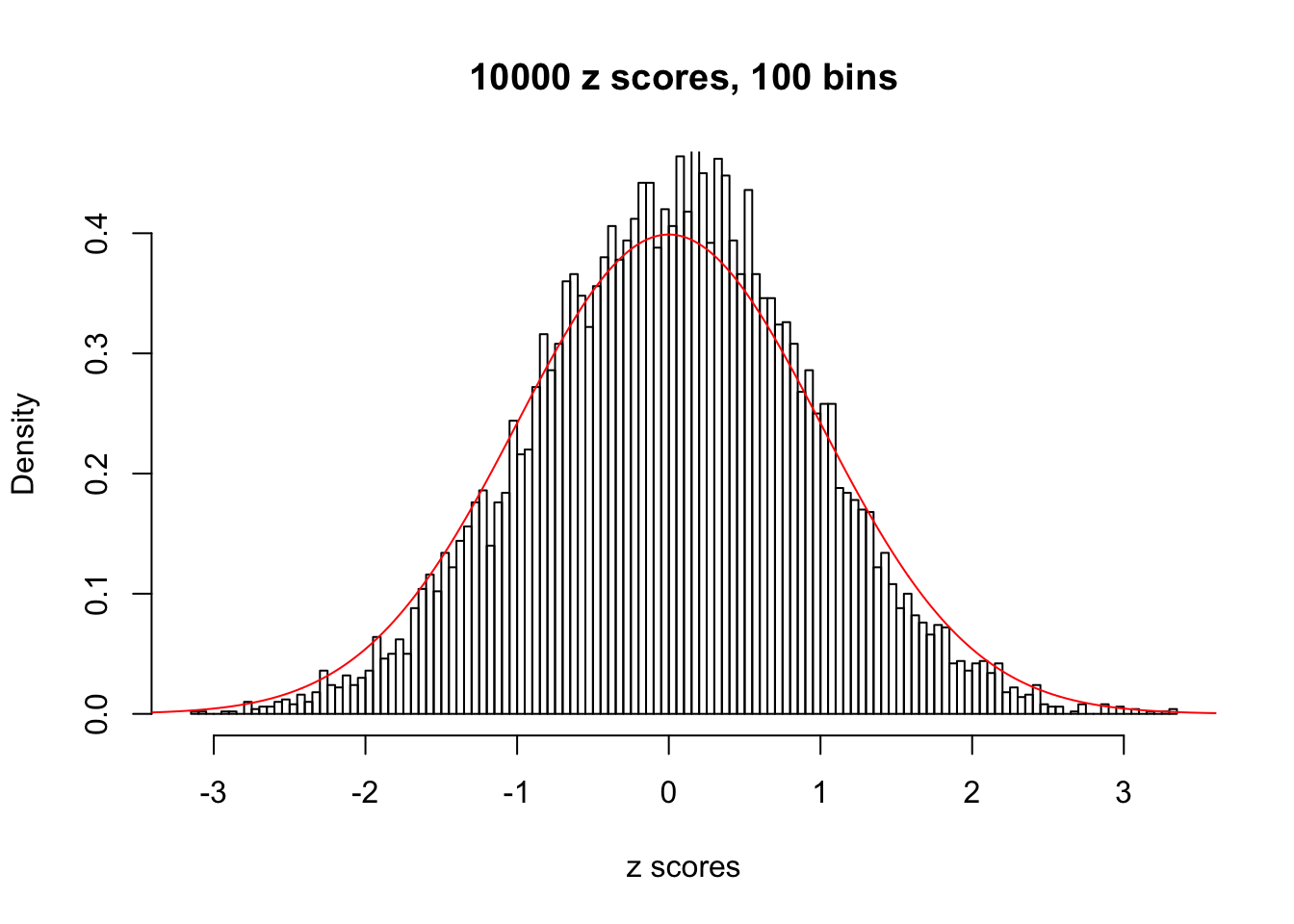

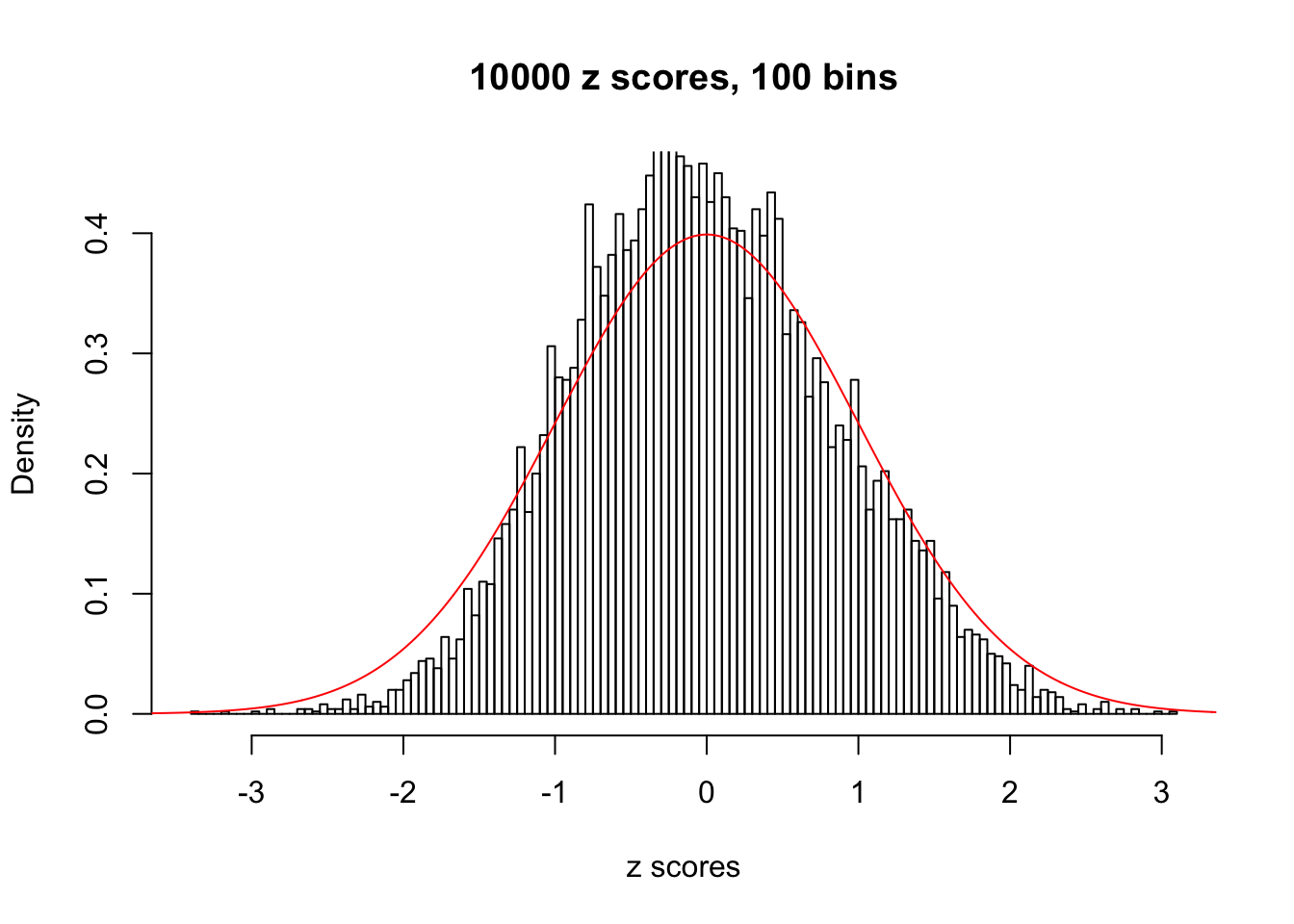
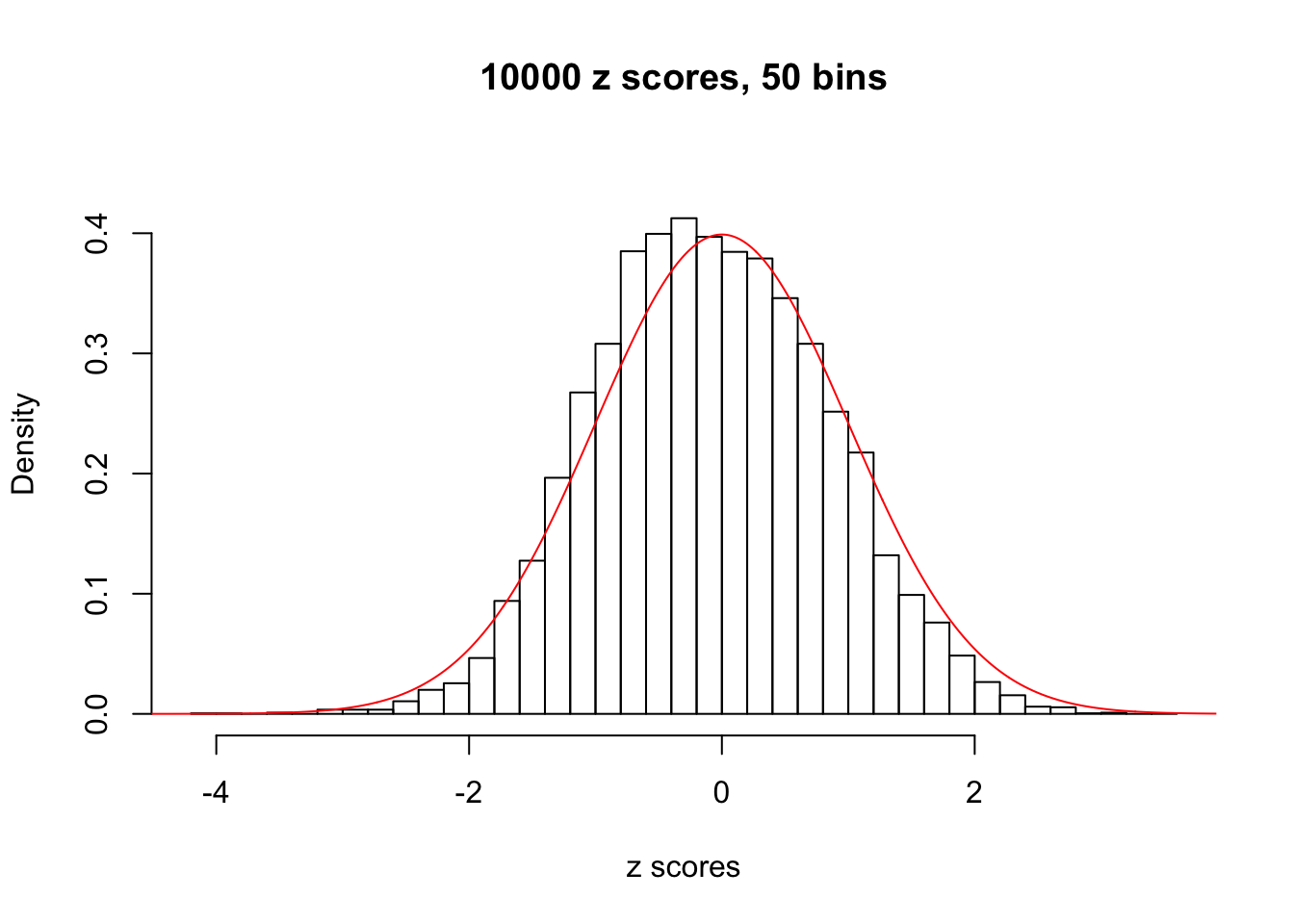
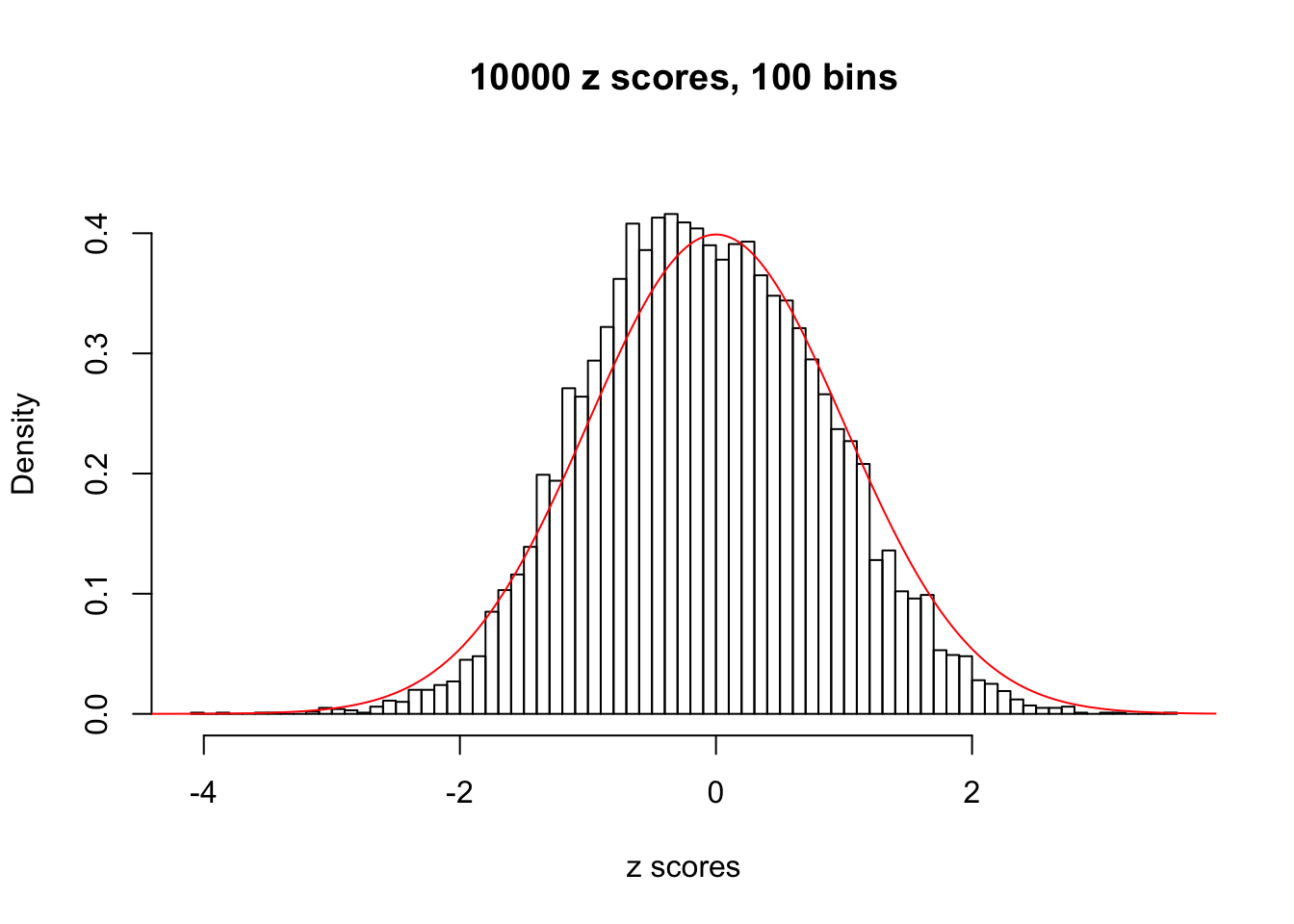
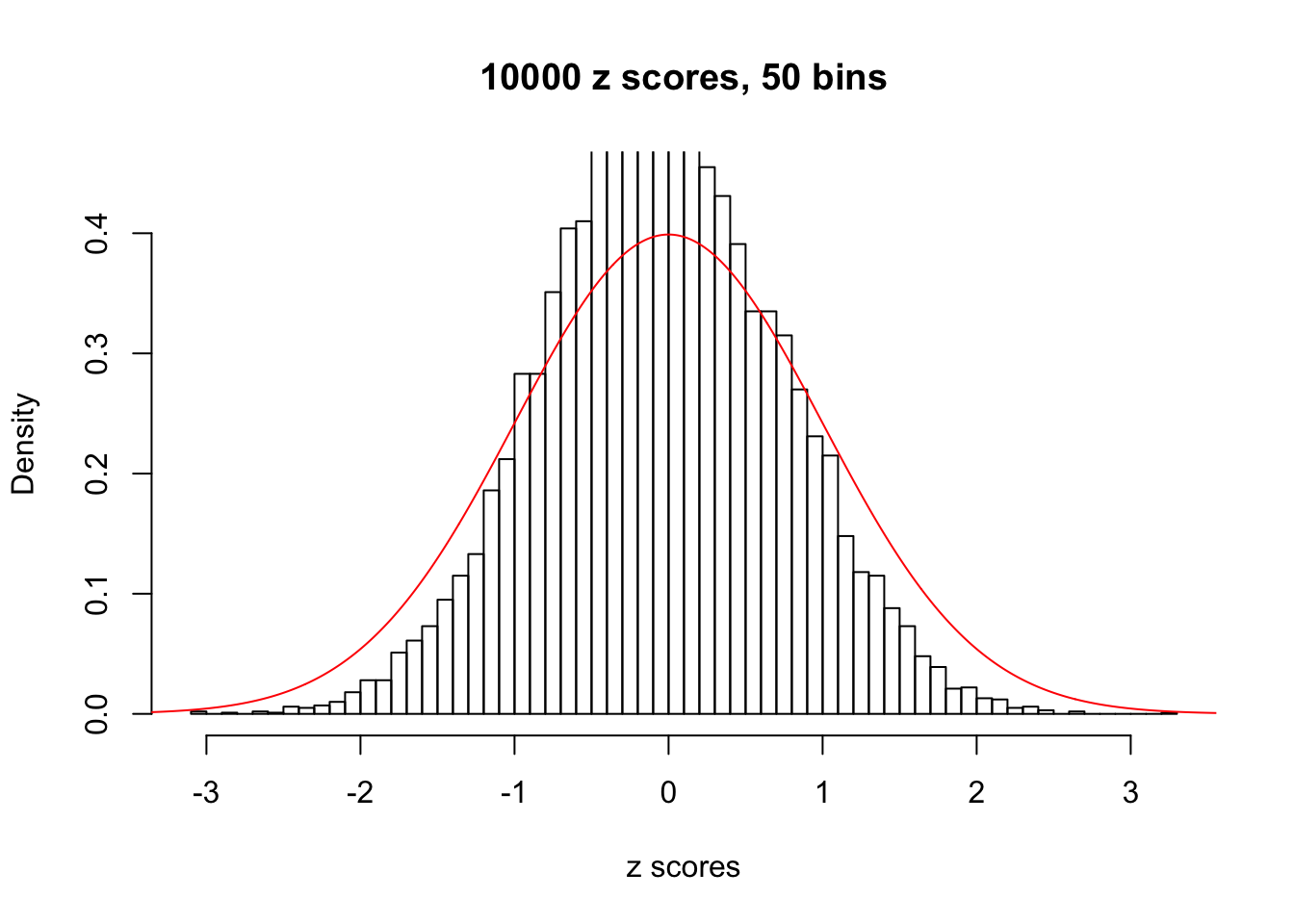
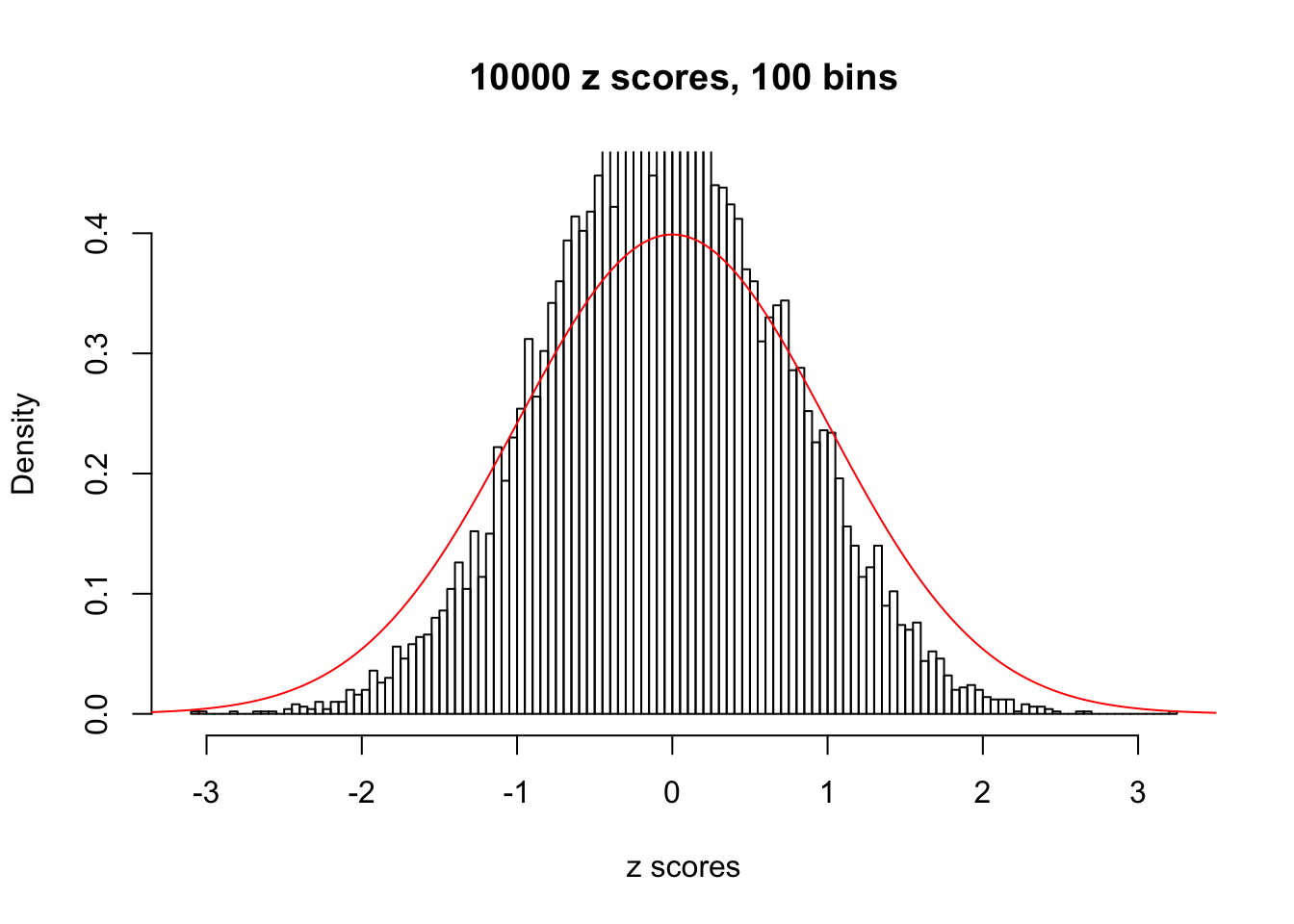
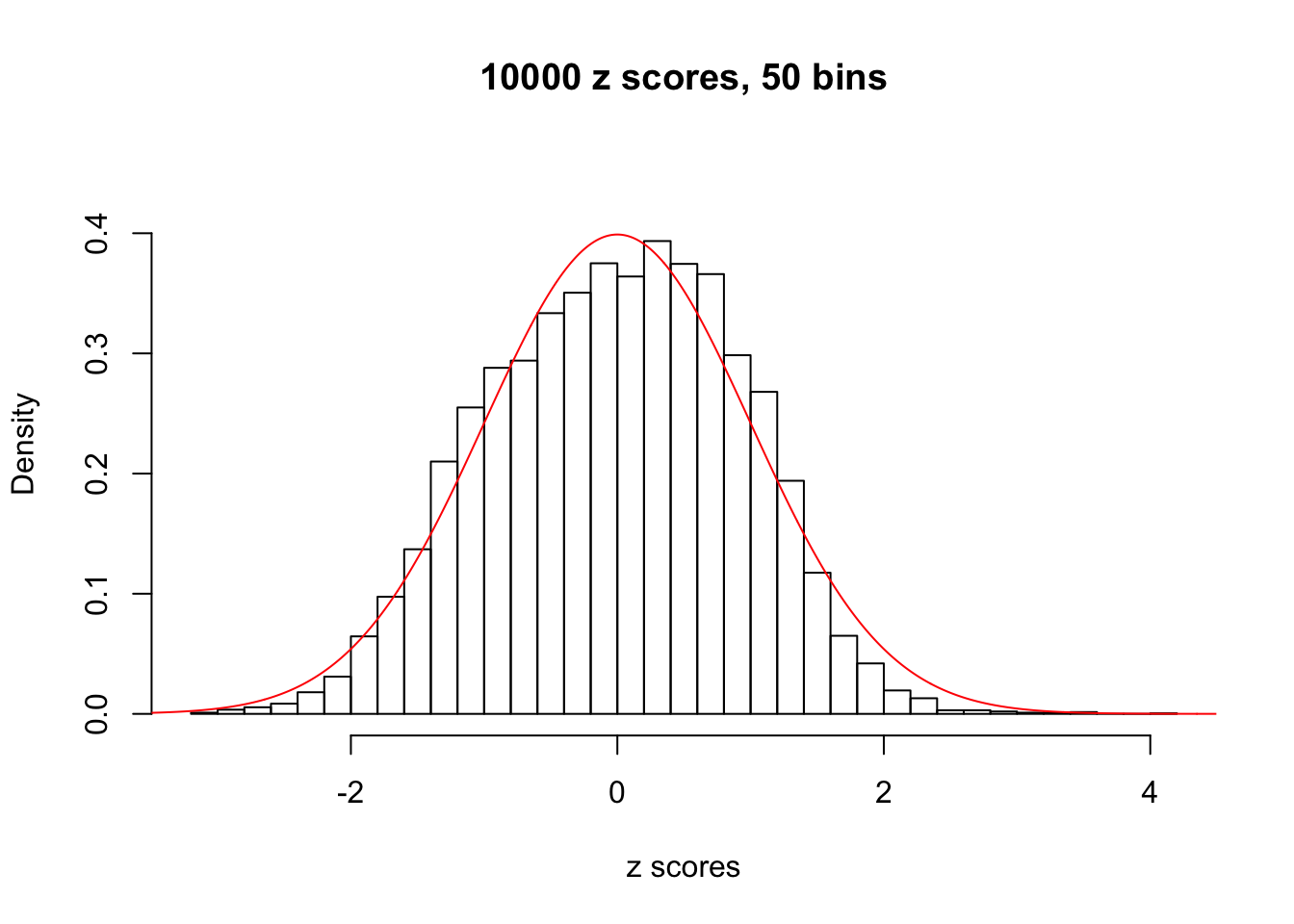

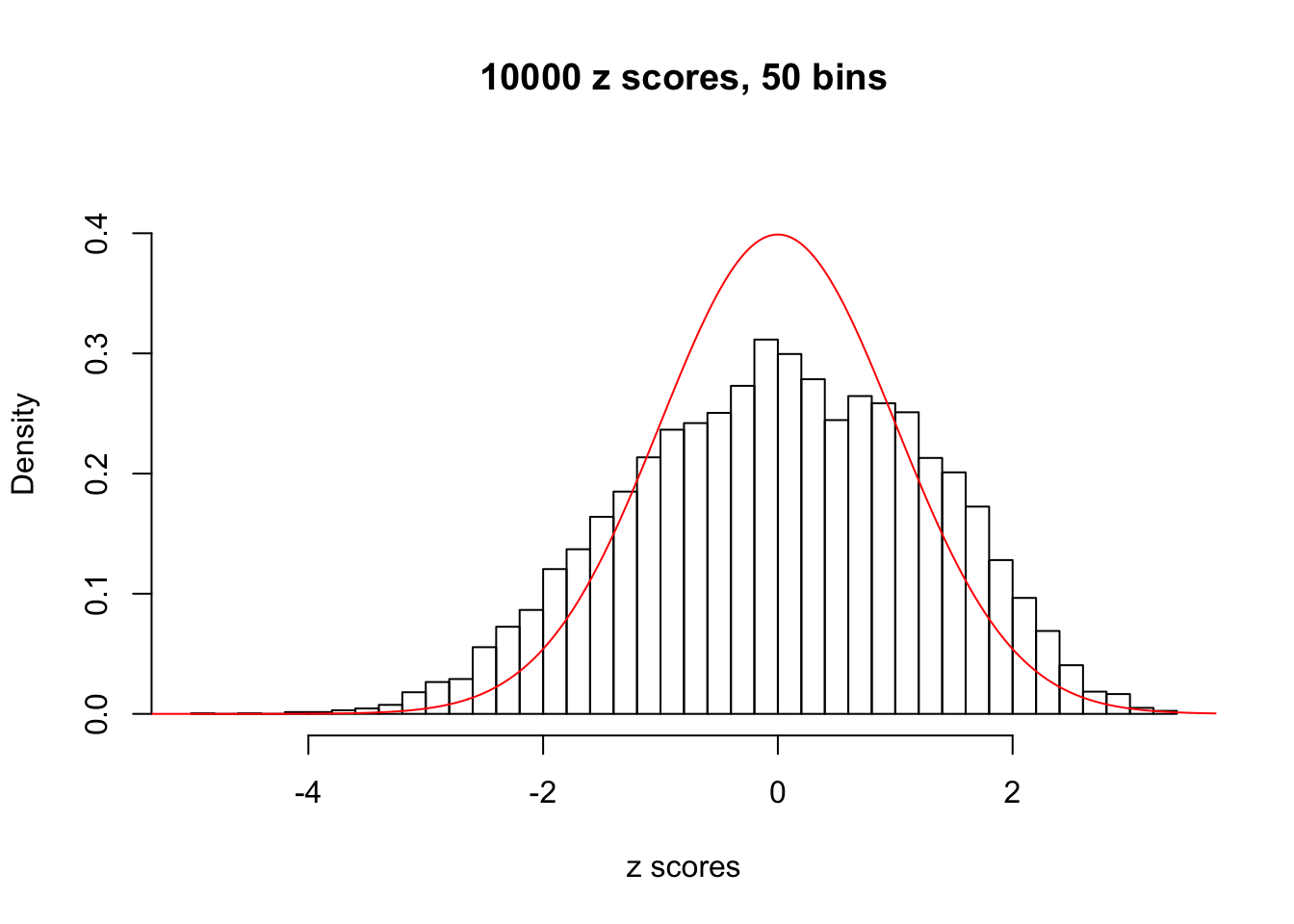
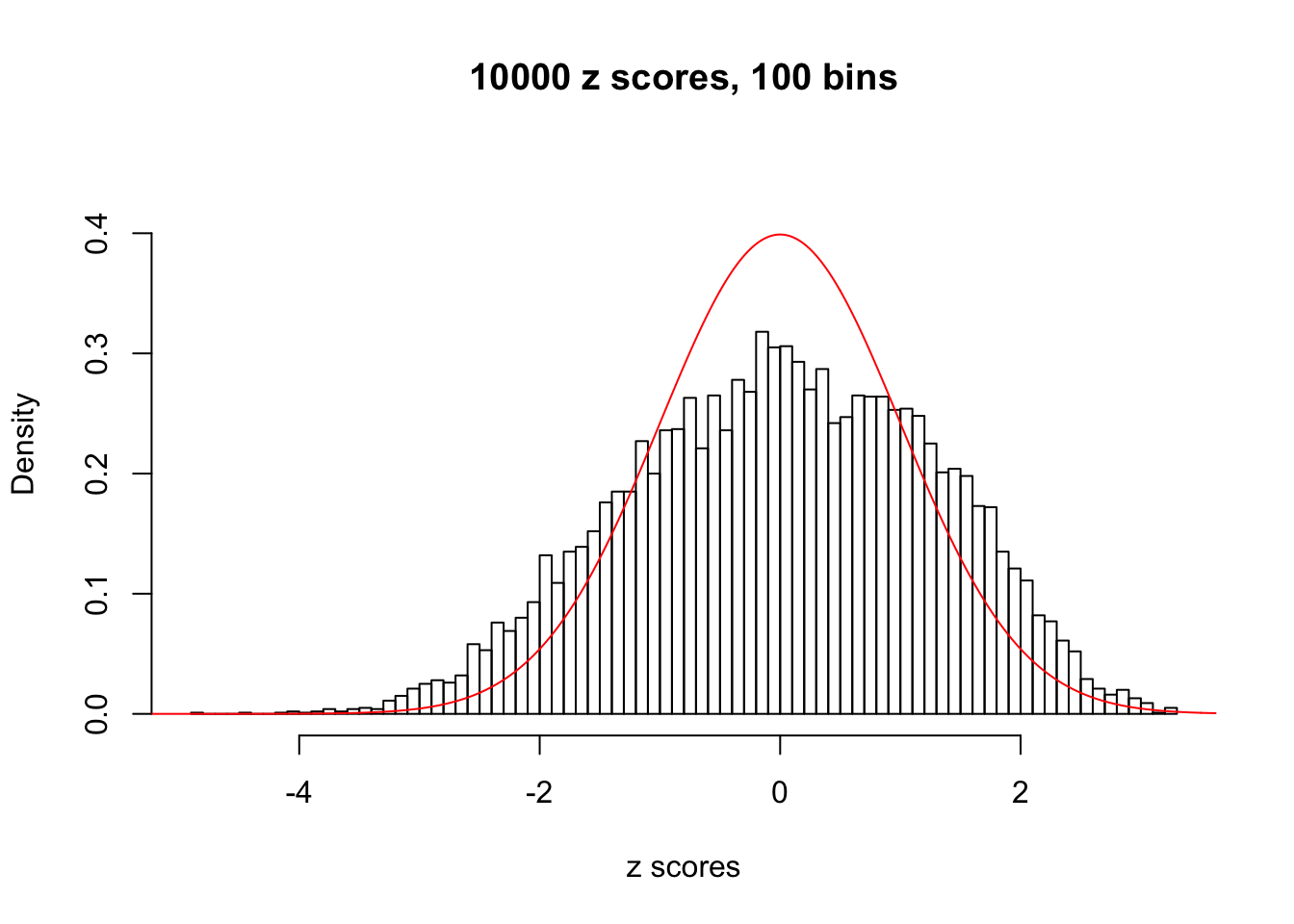
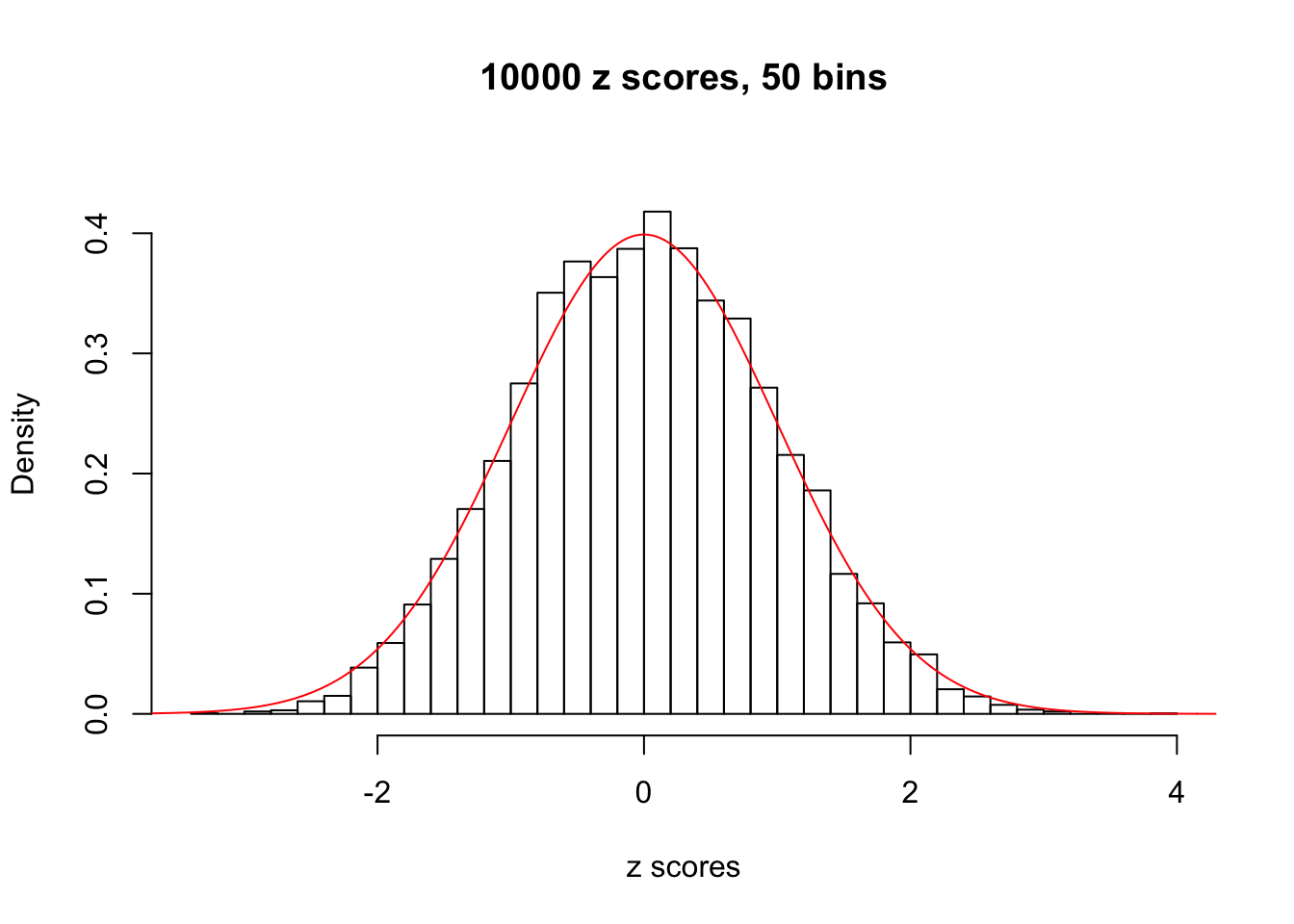
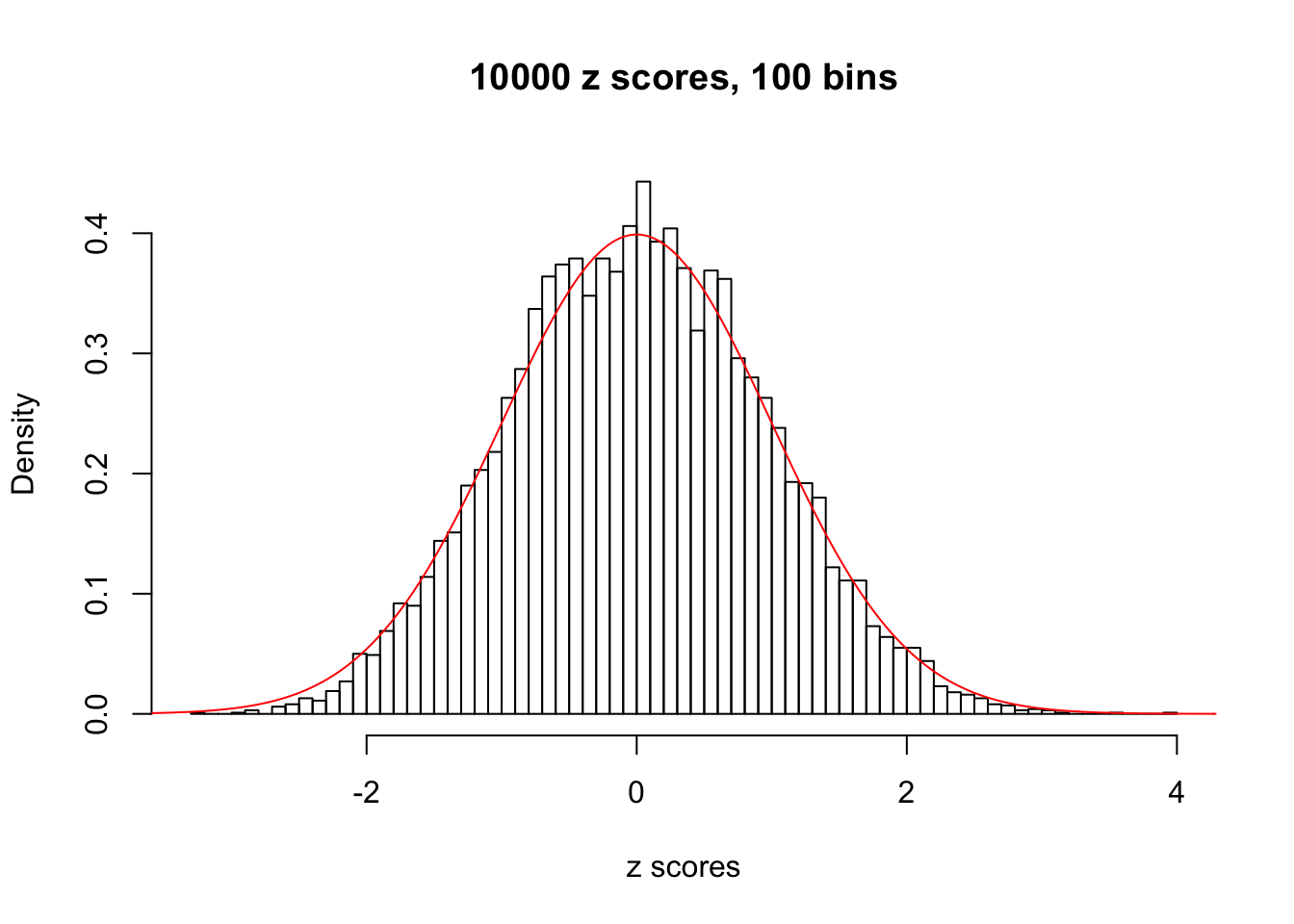
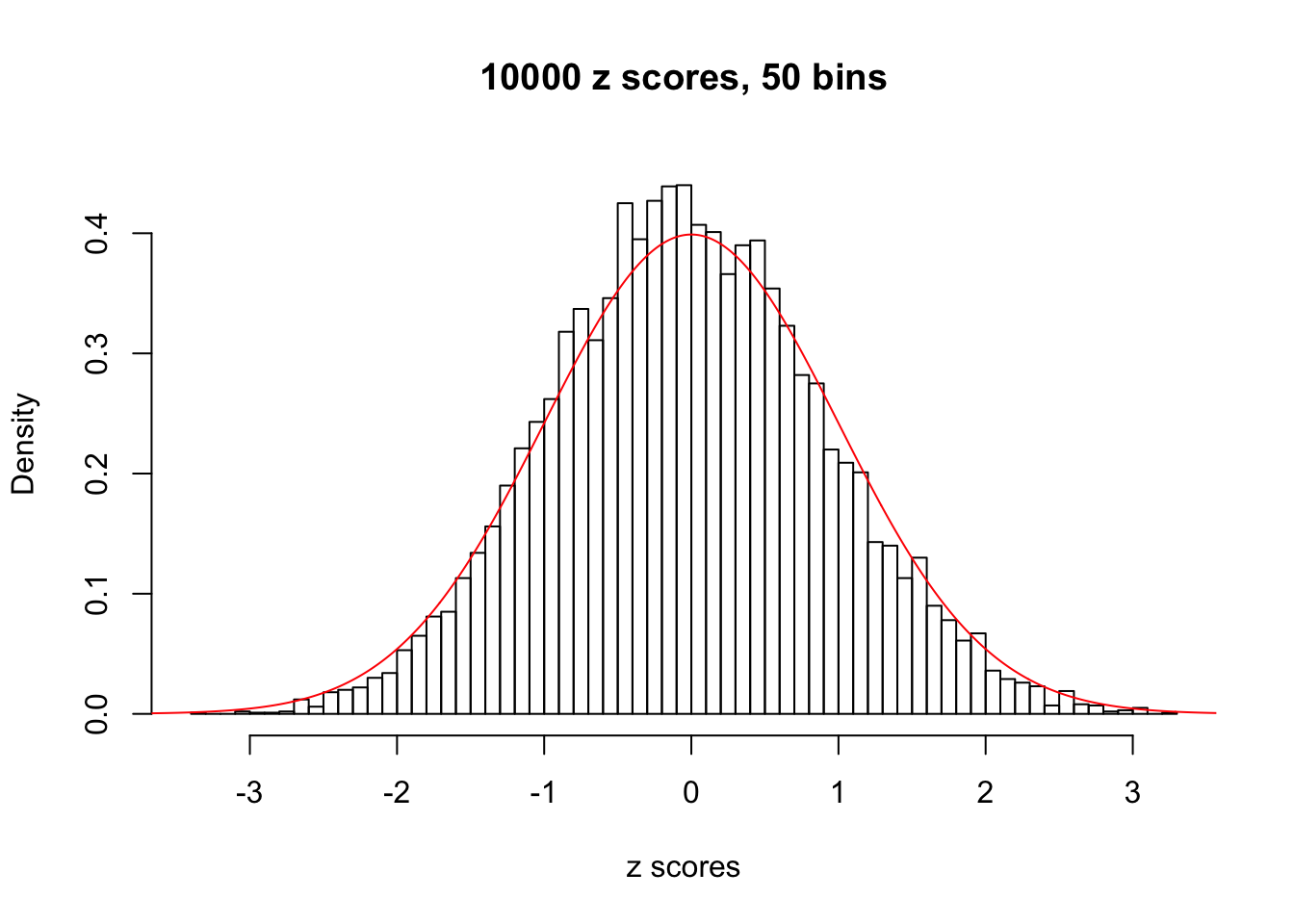
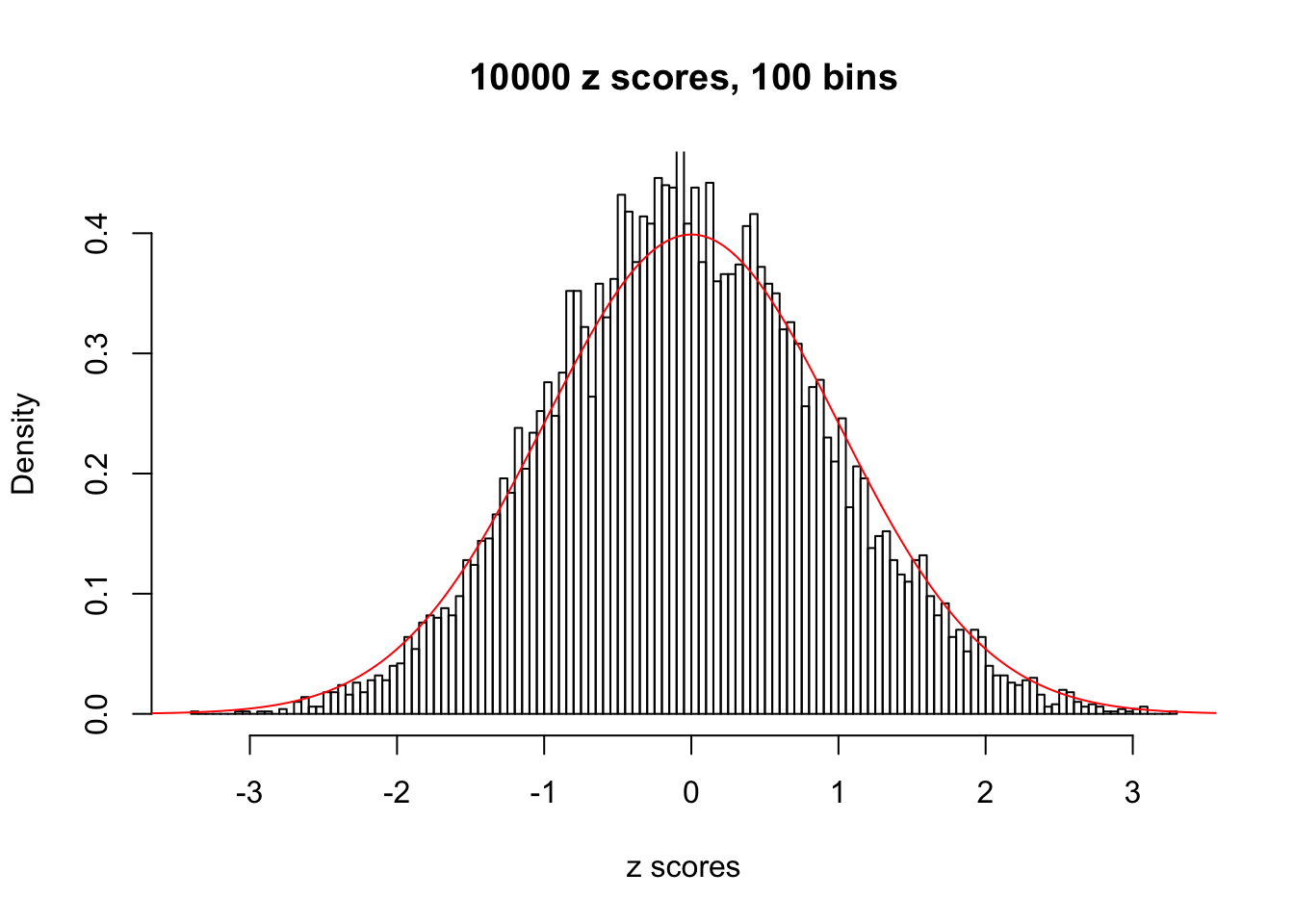
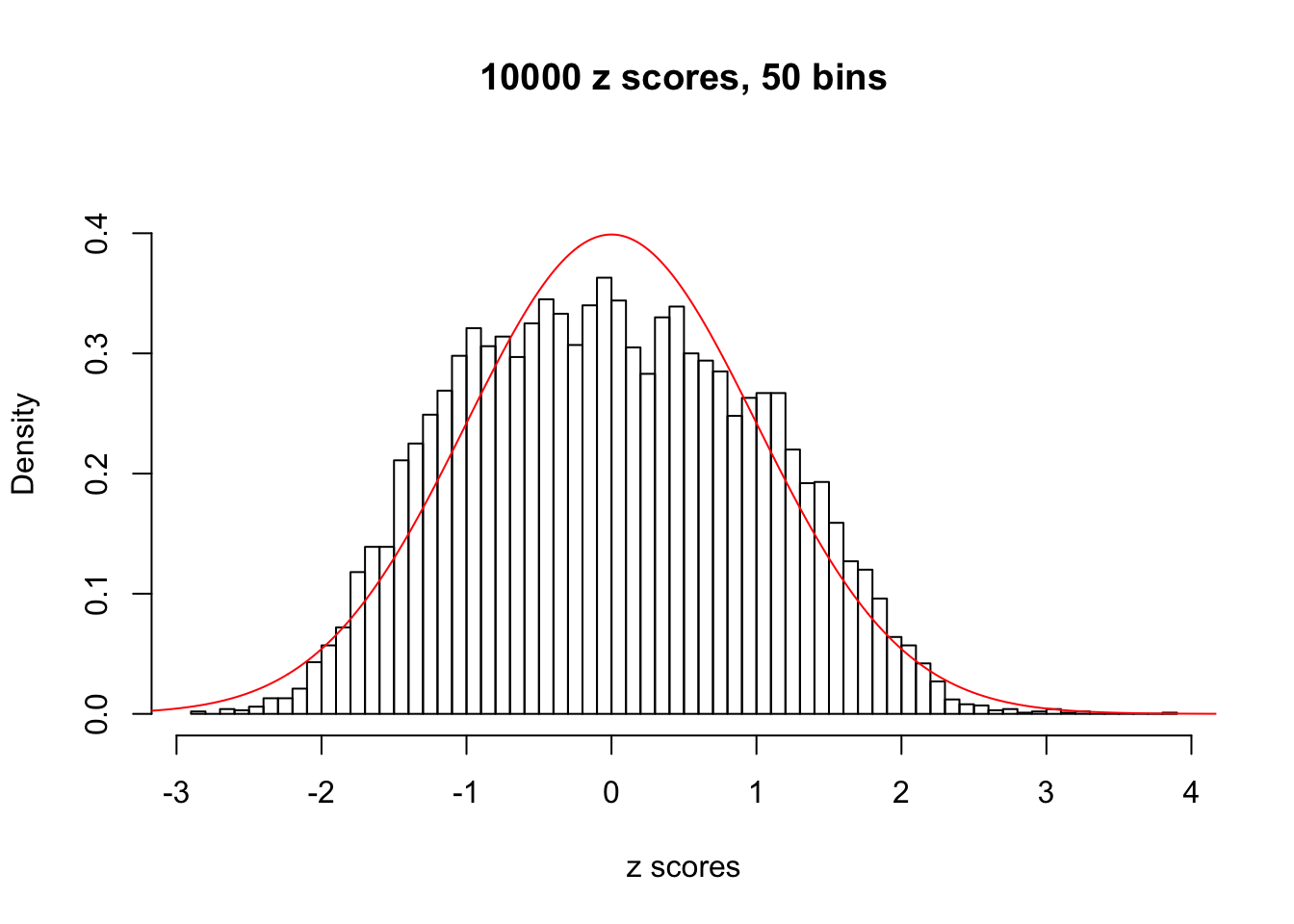
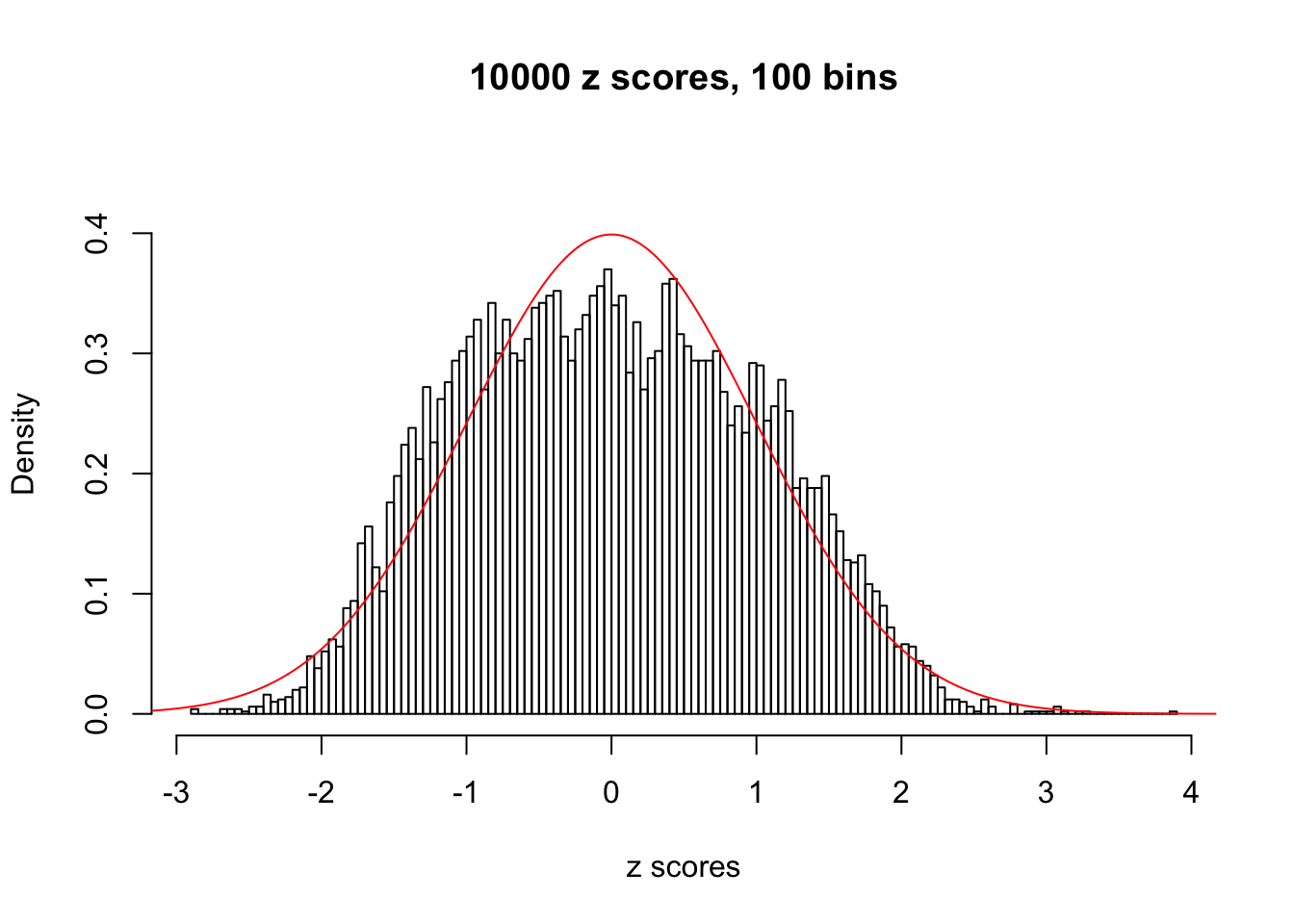

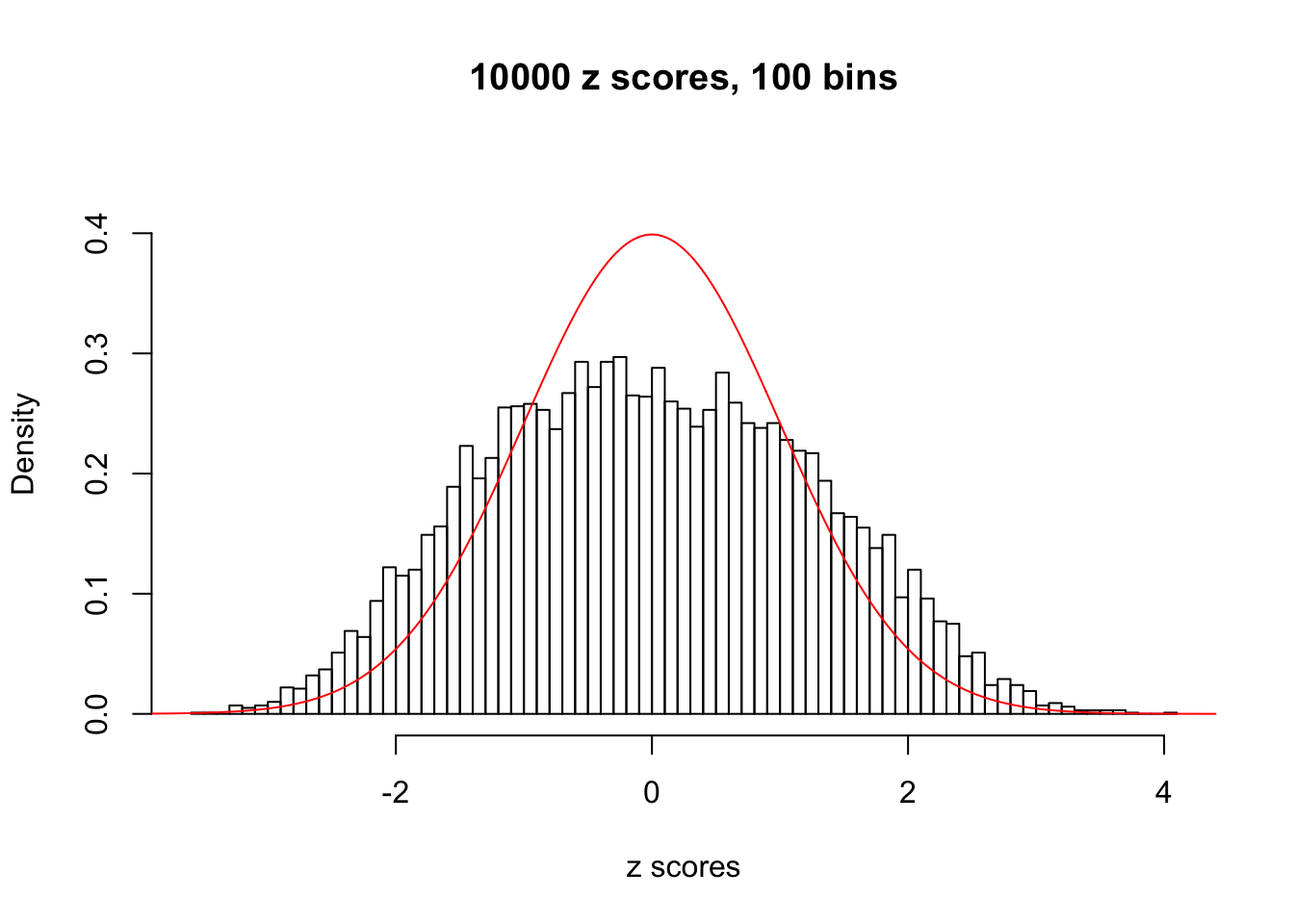
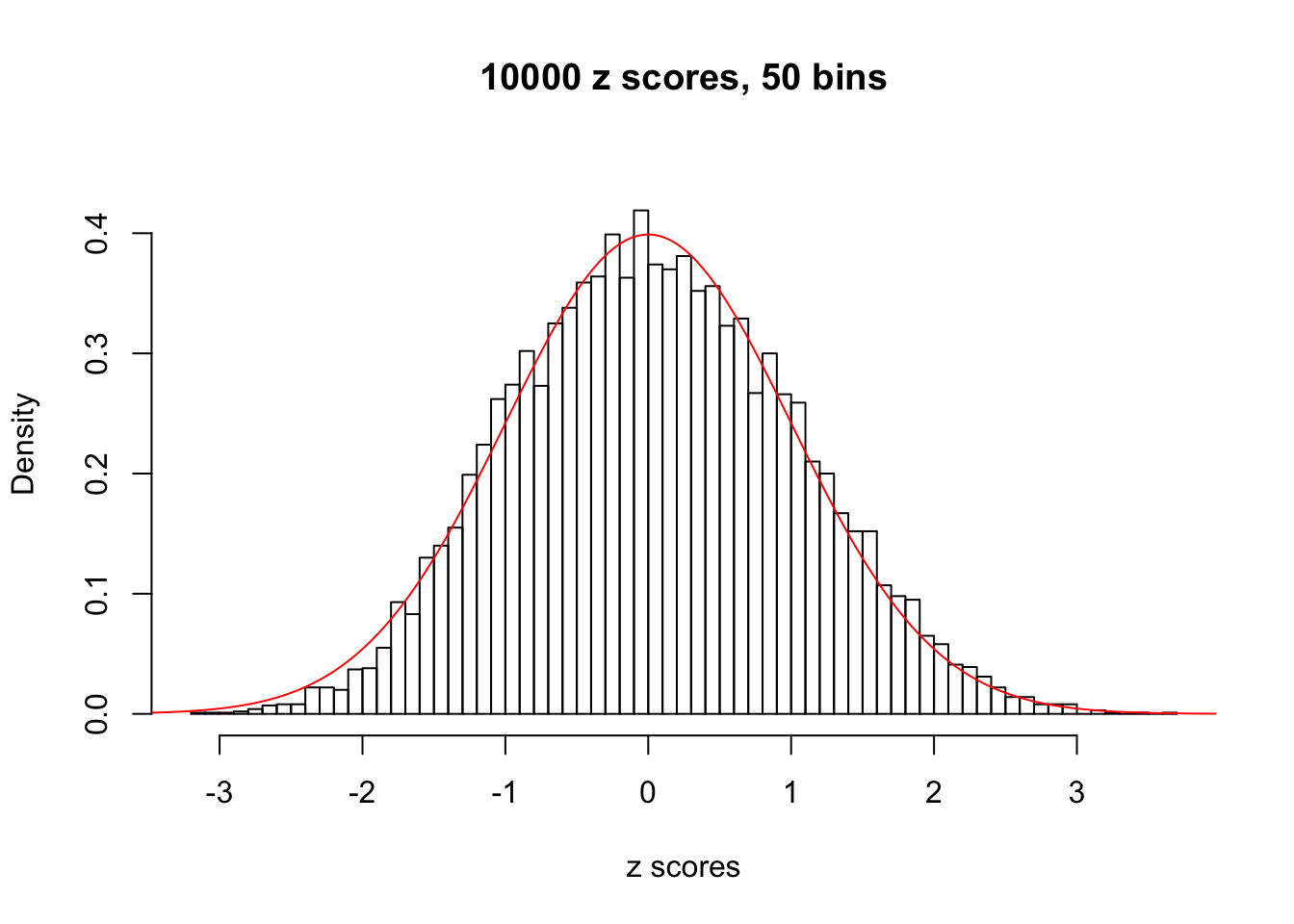
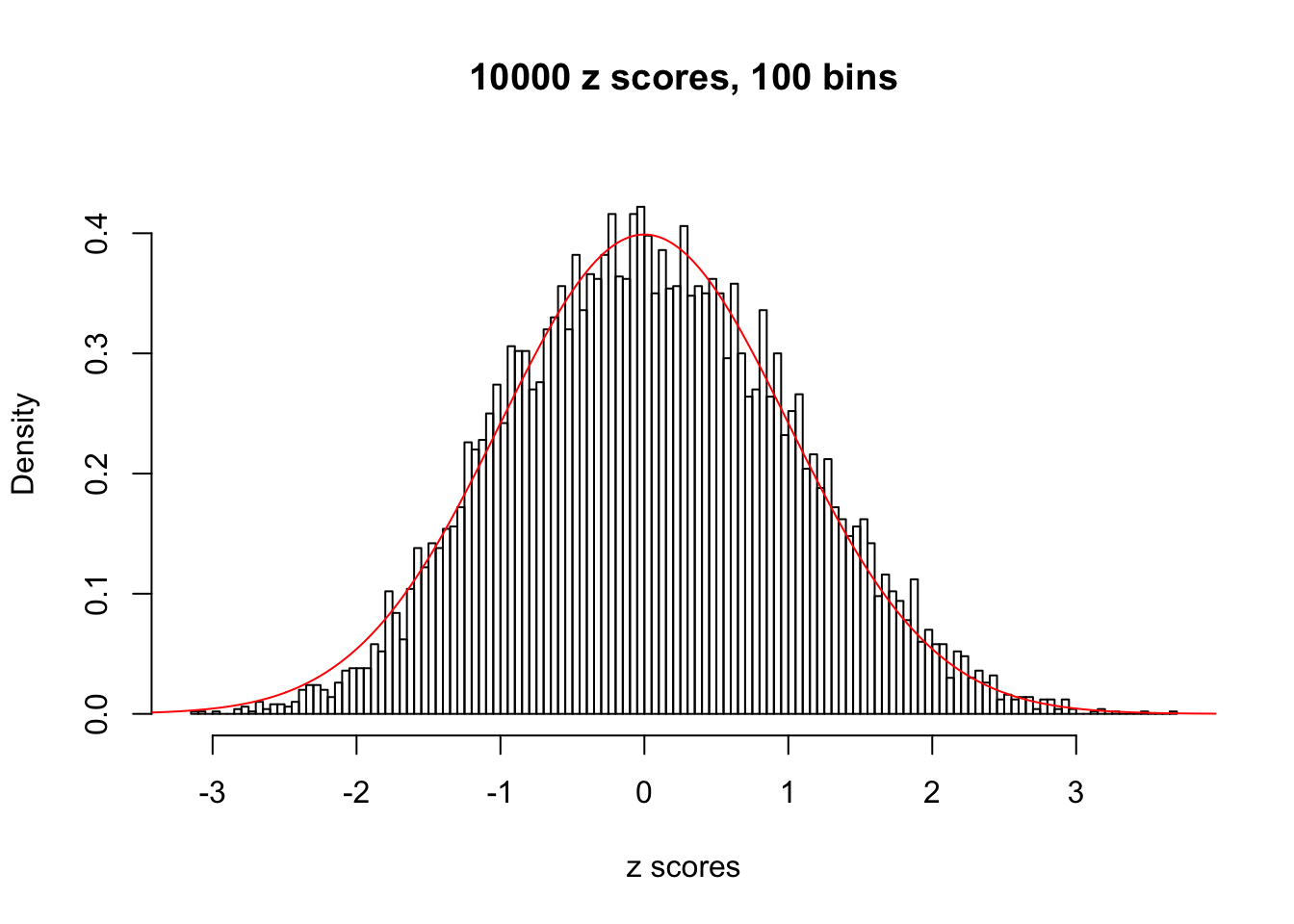
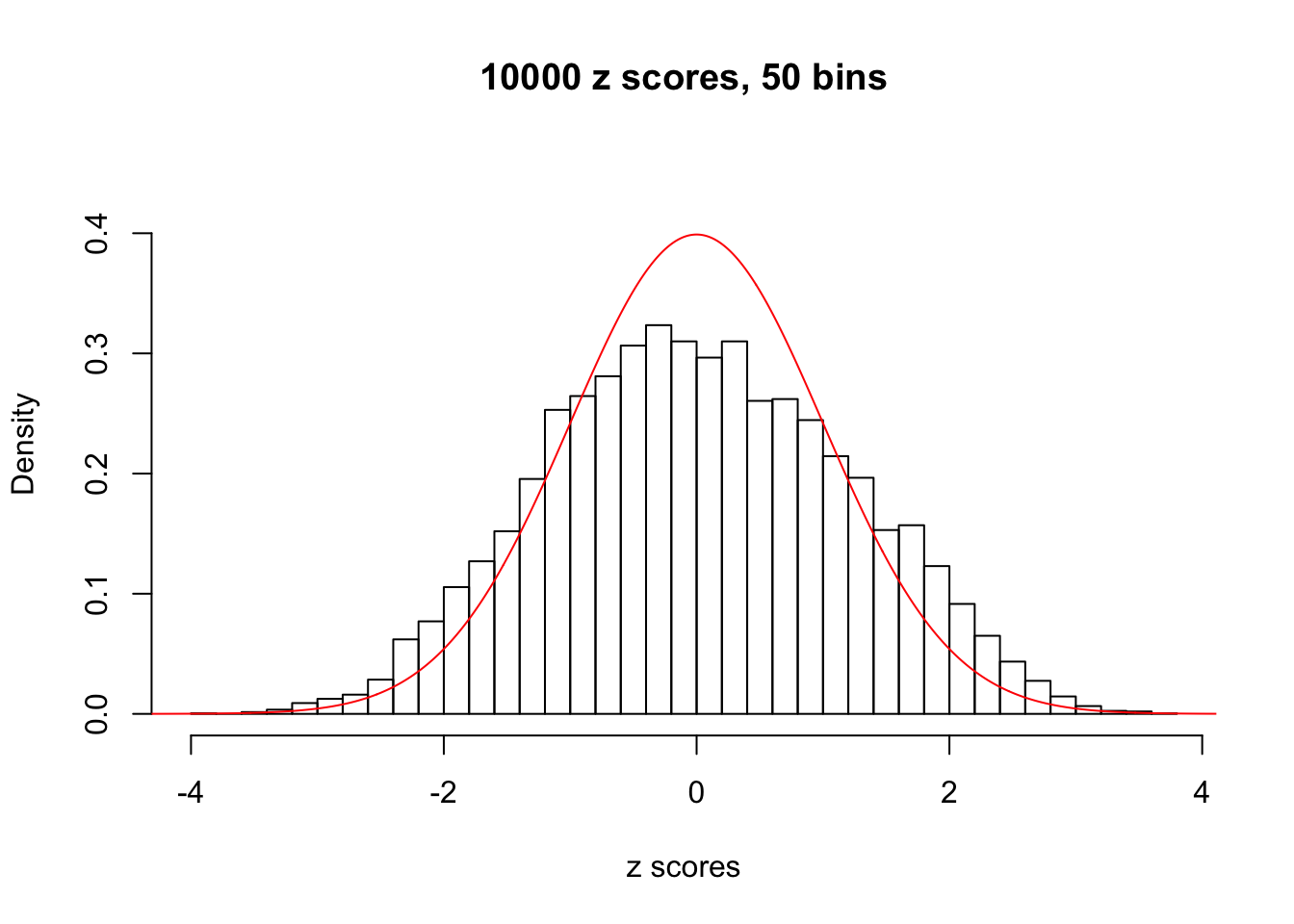
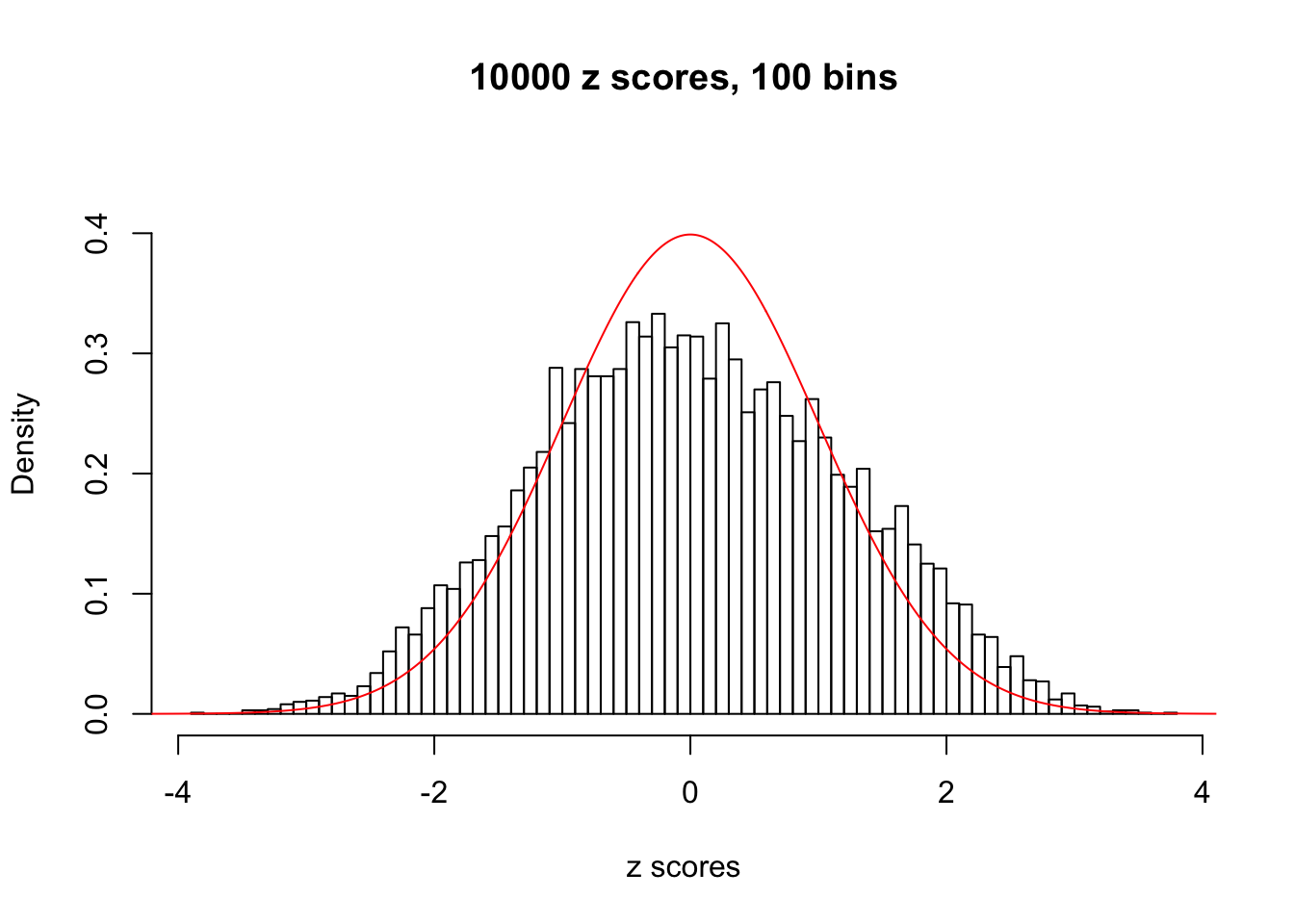
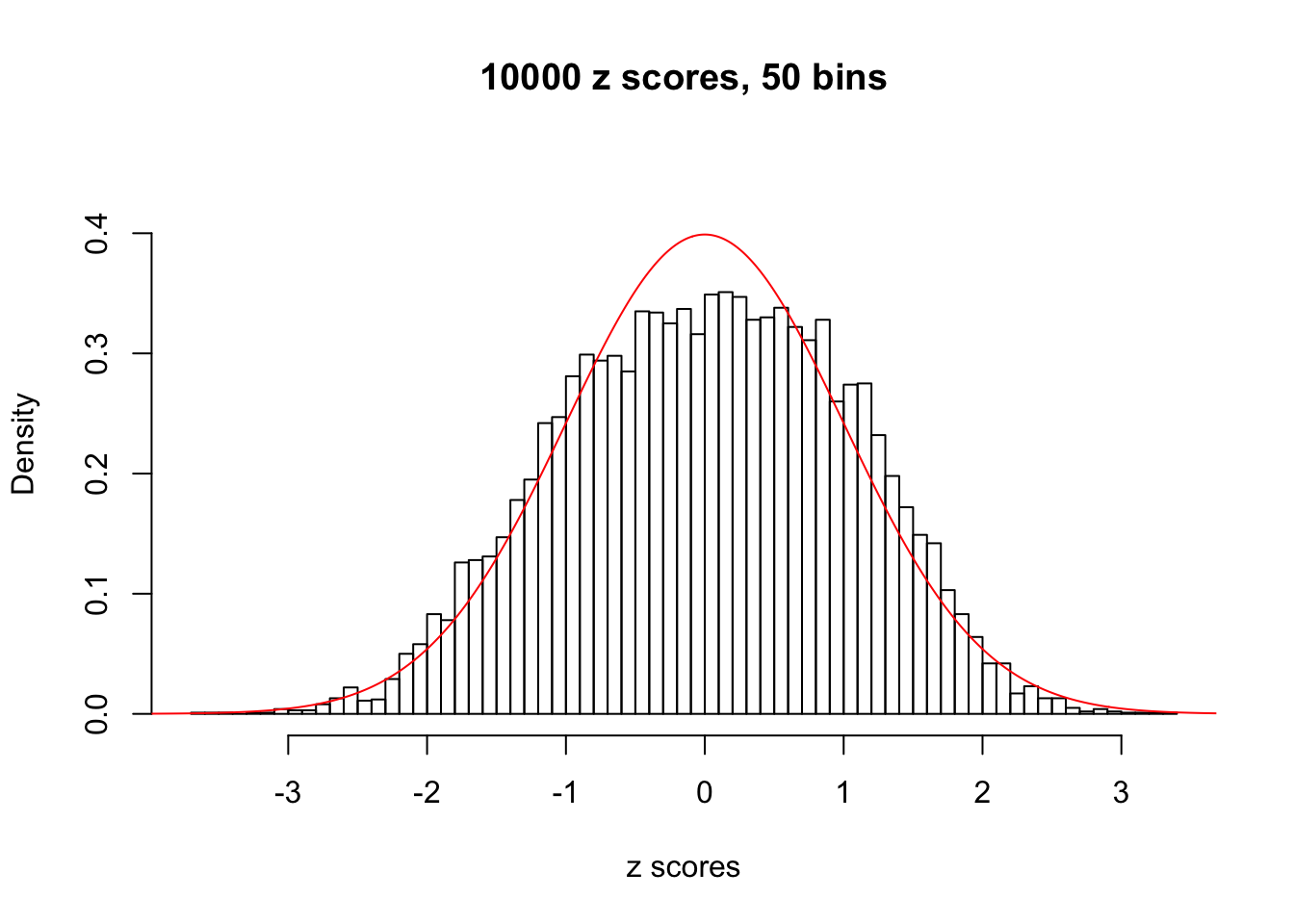
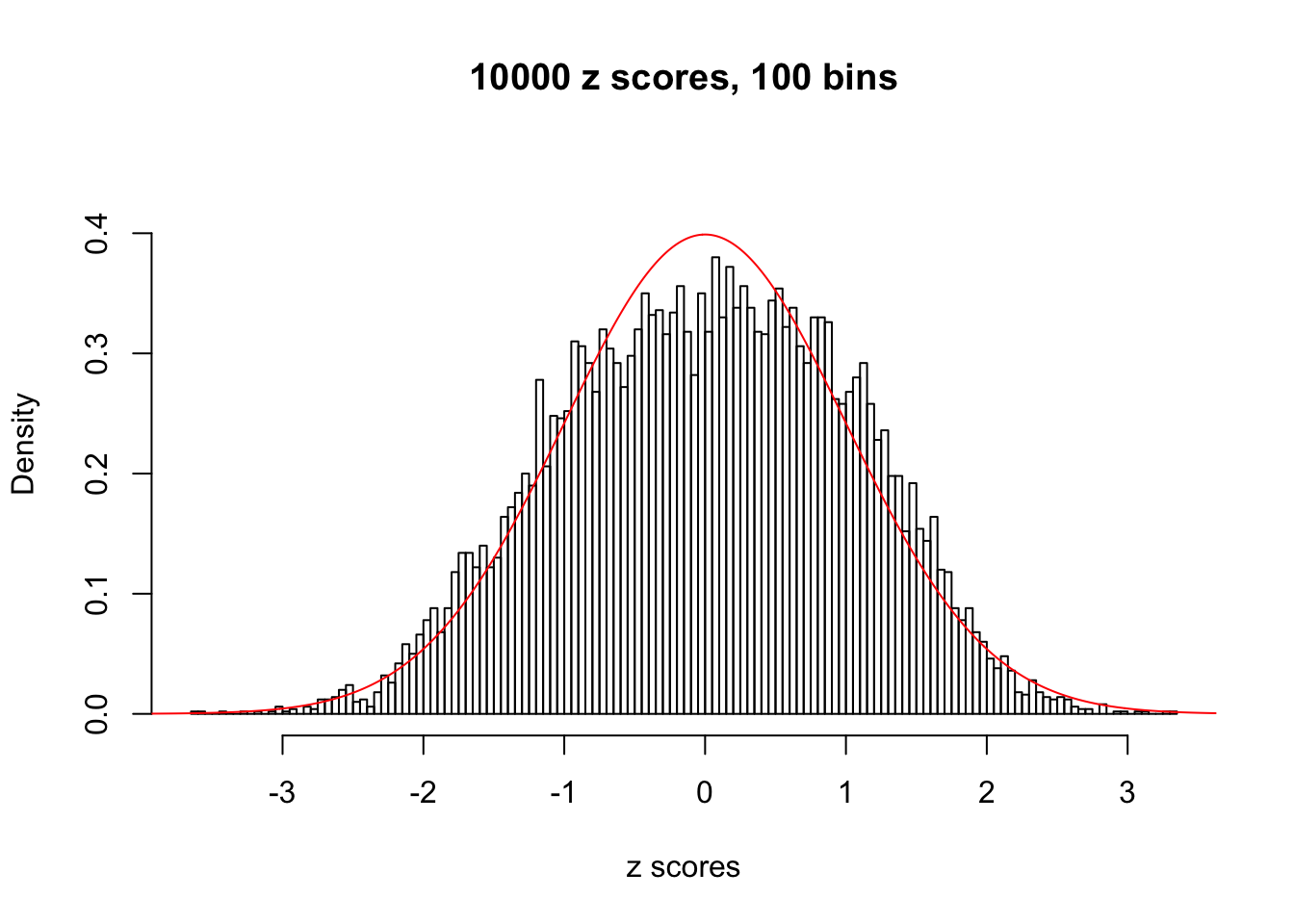
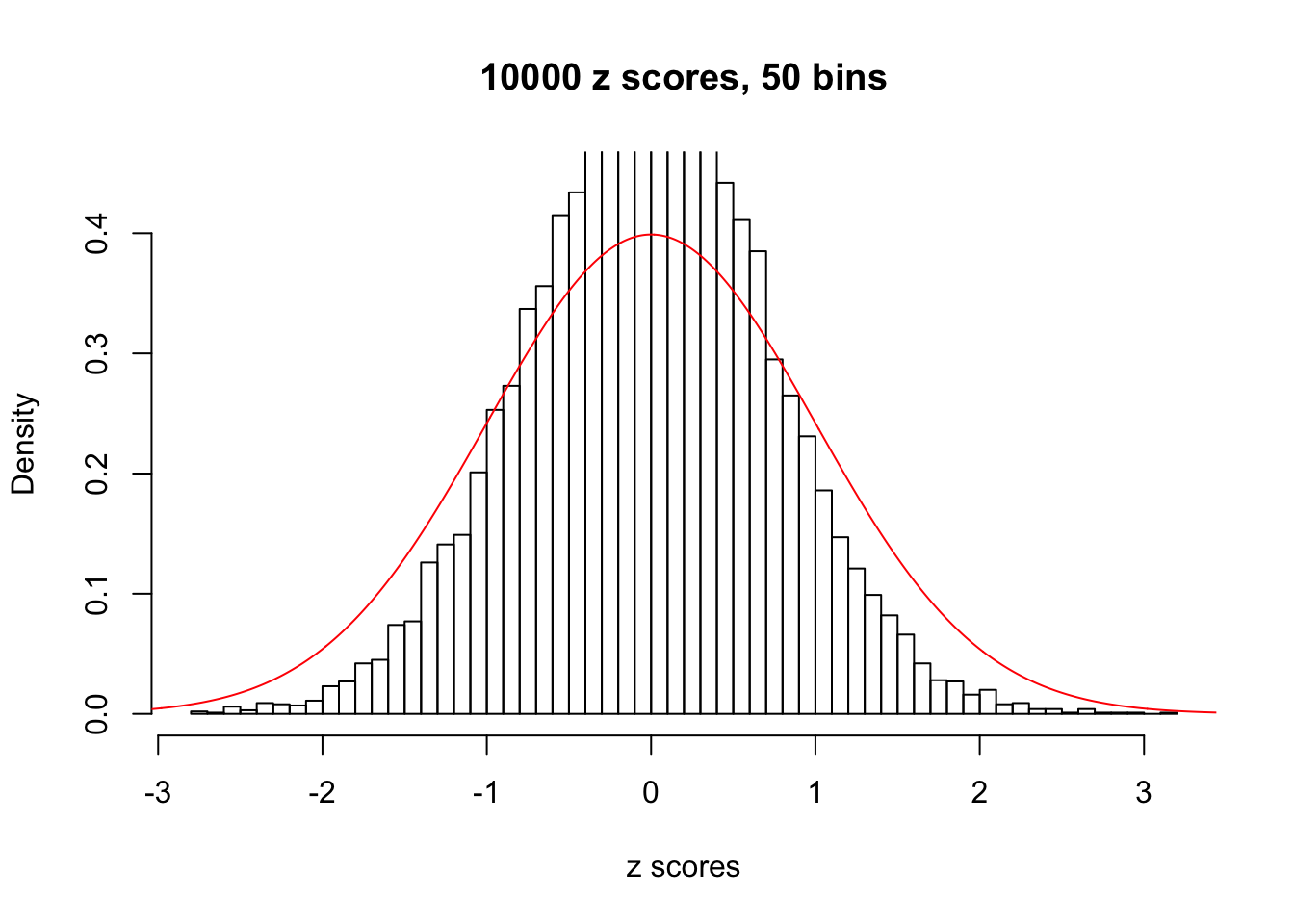
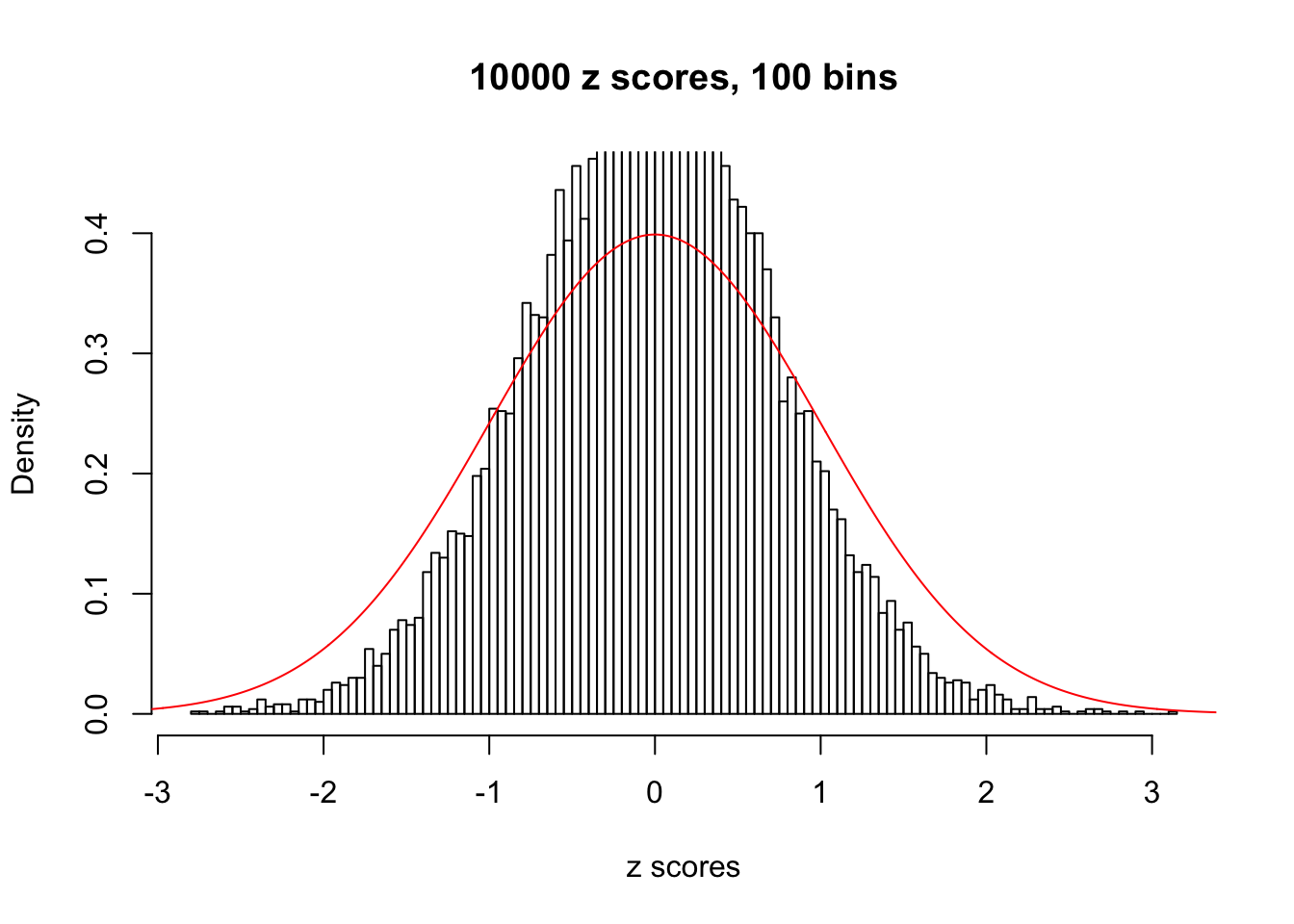
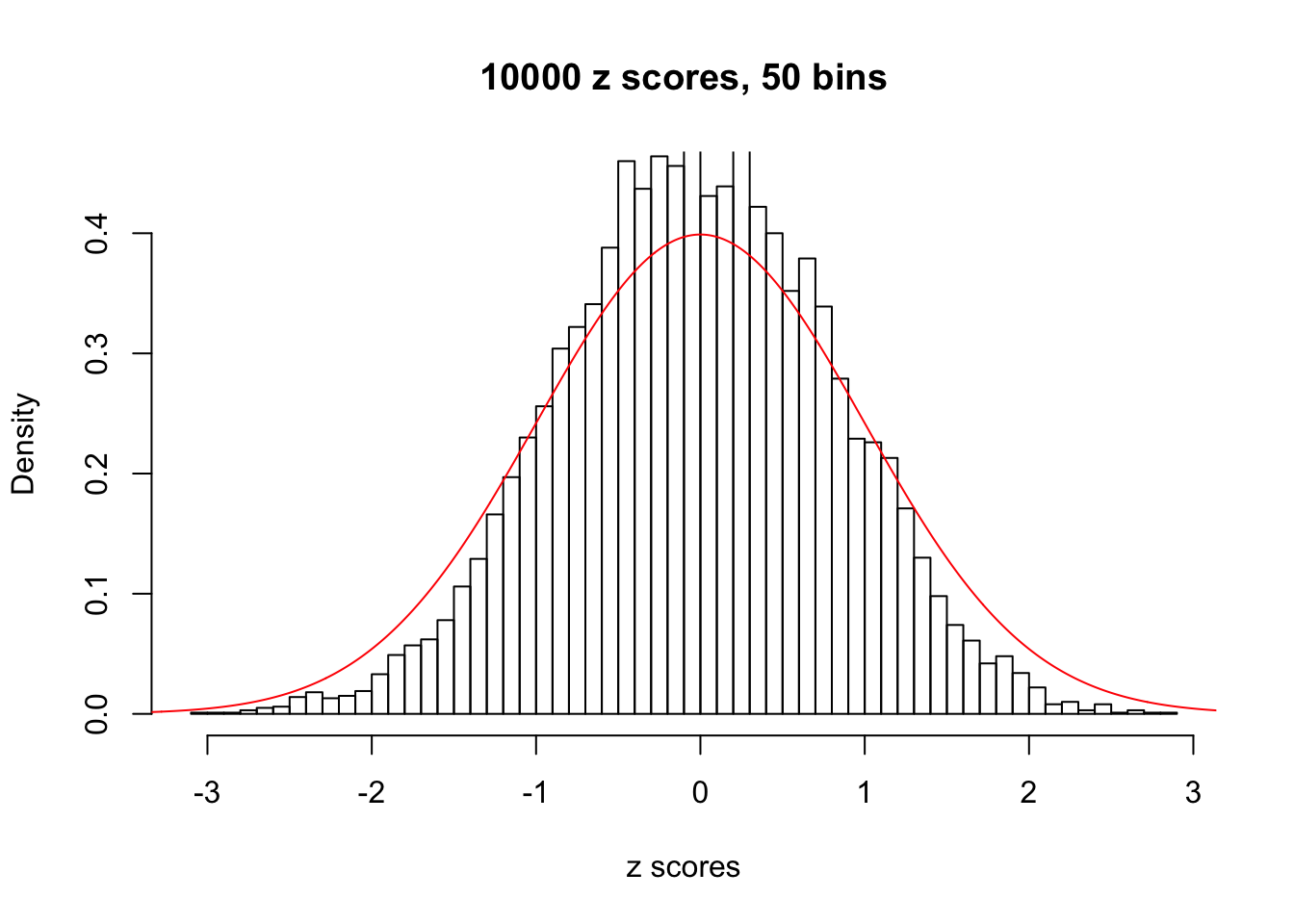

Session Information
sessionInfo()R version 3.3.2 (2016-10-31)
Platform: x86_64-apple-darwin13.4.0 (64-bit)
Running under: macOS Sierra 10.12.3
locale:
[1] en_US.UTF-8/en_US.UTF-8/en_US.UTF-8/C/en_US.UTF-8/en_US.UTF-8
attached base packages:
[1] stats graphics grDevices utils datasets methods base
loaded via a namespace (and not attached):
[1] backports_1.0.5 magrittr_1.5 rprojroot_1.2 tools_3.3.2
[5] htmltools_0.3.5 yaml_2.1.14 Rcpp_0.12.9 stringi_1.1.2
[9] rmarkdown_1.3 knitr_1.15.1 git2r_0.18.0 stringr_1.1.0
[13] digest_0.6.9 workflowr_0.3.0 evaluate_0.10 This R Markdown site was created with workflowr